Star Trek: Deep Space Nine
- View history
Star Trek: Deep Space Nine was the fourth Star Trek series and entered production in 1992 . It was broadcast in first-run syndication from January 1993 until June 1999 .
It was the first Star Trek series created by Rick Berman and Michael Piller rather than by Gene Roddenberry . It was also the only series to air alongside another Star Trek production throughout its entire run, airing alongside Star Trek: The Next Generation from 1993 until 1994 , and then with Star Trek: Voyager from 1995 until 1999 .
- Main Title Theme (seasons 1-3) file info
- (Themes composed by Dennis McCarthy ).
- 1.1 The characters
- 1.2 Alien races
- 1.3 The mirror universe
- 1.4 Technology
- 1.5 Costumes
- 2.1 Development
- 2.2 Serialization
- 3.1 Starring
- 3.2 Also starring
- 3.3 Special guest stars
- 3.4 Special appearances by
- 3.5 Recurring characters
- 4 Executive producers
- 5 Staff writers
- 6.1 Season 1
- 6.2 Season 2
- 6.3 Season 3
- 6.4 Season 4
- 6.5 Season 5
- 6.6 Season 6
- 6.7 Season 7
- 7 Related topics
- 9 External links

Summary [ ]
Deep Space Nine goes where no Star Trek series had gone before – DS9 was the first Star Trek production not based on a starship , but instead, a starbase , known as Deep Space 9 (the starship USS Defiant was introduced in season 3, but the station remained the primary setting of the series). The show is known for its complex characters and storylines, engaging battle scenes and darker (less Utopian) atmosphere. Unlike its predecessors Star Trek: The Original Series and Star Trek: The Next Generation , Deep Space Nine tended to avoid an episodic format for most of its run and instead featured multiple-episode story arcs .
The show broke the "standard format" for Star Trek shows a number of times as well, with a direct, first-person narrative providing the commentary for the episode " In the Pale Moonlight ", a retelling of a classic TOS episode from a different angle in " Trials and Tribble-ations ", life in the racially segregated 1950s in " Far Beyond the Stars ", and a reintroduction of the concept of "black ops" to the Star Trek universe with Section 31 : " Inquisition ". The show also broke with tradition – and with the two Star Trek series that followed it – by featuring a commanding officer as the star of the show at the rank of commander, rather than captain, for a significant portion of its run, until Sisko was eventually promoted to captain in " The Adversary ". Additionally, a number of the episodes and main storylines focused entirely on characters who weren't members of Starfleet: for example, those revolving around Kira, Odo, Jake Sisko, and Quark. (" Progress ", " Shakaar ", " The House of Quark ", " Heart of Stone ", " Prophet Motive ", " Little Green Men ", " Bar Association ", " Body Parts ", " Nor the Battle to the Strong ", " The Ascent ", " The Darkness and the Light ", " Business as Usual ", " Ties of Blood and Water ", " Ferengi Love Songs ")
The characters [ ]
Unlike other Star Trek series, DS9 also had a large cast of recurring characters . Such characters included Nog , Rom , Elim Garak , Dukat , Vedek Bareil Antos , Winn Adami , Weyoun , the Female Changeling , Damar , Martok , Kasidy Yates , Leeta , Brunt , Ishka , and Zek .
Miles O'Brien , and later Worf , were two characters imported from TNG. Worf – a major character from TNG – played a large role on DS9. Several Next Generation characters also had recurring roles on the show, such as Keiko O'Brien and Gowron . Several other TNG characters made appearances too, such as Captain Jean-Luc Picard , Thomas Riker , Q , Lwaxana Troi , Kurn , Lursa , B'Etor , Admiral Alynna Nechayev , Vash , Toral and Alexander Rozhenko . In addition, Julian Bashir and Quark also had one-time appearances on The Next Generation , in " Birthright, Part I " and " Firstborn " respectively. Quark (and the station itself) also made a cameo in the pilot of Star Trek: Voyager , " Caretaker ". Characters from The Original Series were also re-introduced in DS9, including Kor , Kang , Koloth , and Arne Darvin .
The series also featured a number of episodes in which the character of Miles O'Brien was subjected to particular trauma. This became an in-joke among the DS9 writing staff, who called them "O'Brien Must Suffer" episodes and went to great lengths to produce at least one such episode per season. ( Star Trek: Deep Space Nine Companion , p. ? )
Alien races [ ]
The series focused on several races that were first featured on TNG, such as the Bajorans , the Cardassians , the Trill , and the Ferengi . Later, the Klingons and the Romulans (both created in TOS) became pivotal species in the series. Many other species made appearances on the series, including Vulcans , Bolians , and Benzites . The series also created many species of its own, most notably the Changelings , the Vorta , and the Jem'Hadar , who formed part of the Dominion .
Jadzia Dax and other Trills portrayed in DS9 were distinctly different from how Trills had been depicted in the TNG episode " The Host ". In DS9, the relationship between host and symbiont was described more as a truly symbiotic relationship rather than the symbiont dominating the host. Trills now having spots, rather than prosthetic make-up, was due to studio executives feeling that Jadzia Dax actress Terry Farrell was too attractive to cover her face up. ( Cinefantastique , Vol. 23, No. 6, p. 21)
Another significant change was the relationship Ferengi had with Humans . The Ferengi on TNG had originally been intended to be a new adversary comparable to the Klingons in TOS, although the writers had quickly realized how ridiculous the Ferengi were as villains. In DS9, the Ferengi were mainly entrepreneurs and the Ferengi Alliance was a politically neutral economic power.
Deep Space Nine also featured several regular characters who were not members of Starfleet , with Kira Nerys , a member of the Bajoran Militia , and Odo , the station's chief of security , as well as civilians such as Quark and Jake Sisko .
The mirror universe [ ]
The series spent some time exploring the mirror universe , which had not been seen since the TOS episode " Mirror, Mirror ". The mirror universe was featured in five episodes of the series: " Crossover ", " Through the Looking Glass ", " Shattered Mirror ", " Resurrection ", and " The Emperor's New Cloak ".
Technology [ ]
The show also focused on a wider array of uses and depictions of functions for holographic simulations (known as a holodeck in TOS and TNG but as a holosuite in DS9). In addition to many obvious activities (such as those referenced by Chief O'Brien and Julian Bashir) which were completely in keeping with holodeck usage on The Next Generation , the numerous applications of the holosuites on DS9 included them being used as: a recurring background for people to hang out in, in the form of a 1960s Las Vegas lounge (in numerous episodes); a weapons showroom (by Quark); and the location for a baseball game between teams assembled by Sisko versus Solok , a long-time rival Vulcan captain (in " Take Me Out to the Holosuite ").
Costumes [ ]
DS9 initially featured a noticeable change in Starfleet uniform to a reversed color scheme of the TNG uniform, which is a black design with the division color on the shoulders and a grayish-indigo undershirt underneath the uniform, resembling the cadet uniforms seen on The Next Generation . This design is called the old DS9-style uniforms . It was mostly implemented as a continuation of Star Trek 's pattern of changing uniforms over time, although factors such as the discomfort of wearing TNG-style uniforms played a role as well.
What came to be known as the DS9-style uniforms were more of a variant than a switch, however, due to the cost of producing all-new uniforms. This is why, for example, the DS9 crew themselves wear old DS9-style uniforms from the beginning of DS9 pilot episode " Emissary " up to the fifth season episode " The Ascent ", and this style was also later used throughout Star Trek: Voyager . Meanwhile, even after TNG had gone off the air, the dress uniforms and flag officer uniforms on DS9 up until the sixth season (as well as uniforms on Earth , as seen in the fourth season episodes " Homefront " and " Paradise Lost ") were " TNG-style ".
These discrepancies were corrected with the later switch to a unified, "gray-on-black" format with the division color undershirts (known as the “ DS9-style ”), which was used through Star Trek Nemesis and were also used in this series, starting with " Rapture " and for the remainder of this series, though the old DS9-style uniforms in this series appeared four more times following the uniform change in the episodes, " In Purgatory's Shadow " and " By Inferno's Light " as well as seen on a photograph of " Field of Fire " and in the flashback scenes of " What You Leave Behind ".
Background information [ ]
Development [ ].
The decision to set the series on a space station, rather than a starship, spawned when Brandon Tartikoff originally approached Rick Berman about the show, in 1991, and specifically said he wanted it to have a format that was new for Star Trek but was classically western; if The Next Generation was Wagon Train in space, Deep Space Nine was to be The Rifleman in space – a man and his son coming to a dilapidated frontier town on the edge of known civilization. Berman brought this concept to Michael Piller , and together they set about creating a western in space. As Robert Hewitt Wolfe later explained, " We had the country doctor , and we had the barkeeper , and we had the sheriff and we had the mayor , we had it all, it was all there. We had the common man, Miles O'Brien , the Native American, Kira . " Indeed, the producers initially discussed setting the show at a colony on an alien planet rather than on a space station. This idea was ultimately rejected because it was felt that it would involve too much location shooting, and because they felt that fans of Star Trek wanted to see story lines set primarily in space , not on a planet. ( New Frontiers: The Story of Deep Space Nine , DS9 Season 2 DVD special features)
The change of venue to a space station was largely intended to differentiate DS9 from The Next Generation , because the producers felt that having two shows about a starship airing simultaneously would be unacceptable. As co-creator and executive producer Rick Berman later explained, " Because there were two years of overlap with The Next Generation , we could not create a show that took place on a spaceship. It just seemed ridiculous to have two shows and two casts of characters that were off going where no man has gone before. It was a land-based show, it was a show that in a sense was taking place on a space station. So it had to be an entirely different concept. " ( Deep Space Nine: A Bold Beginning , DS9 Season 1 DVD special features)
The decision to set the show on a fixed station rather than a traveling starship was also based upon a desire to look deeper into the actual workings of the Federation and to see how it dealt with the type of problems one wouldn't find in a show set upon a starship. Michael Piller felt that, by having the characters standing still, they would be forced to confront issues not usually applicable to people on a starship. Whereas on The Next Generation , issues raised each week could simply be forgotten about the following week as the ship visited somewhere else, on a space station, events couldn't be forgotten or left behind but instead had to have implications for the future. As Piller explained, " We didn't want to have another series of shows about space travel. We felt that there was an opportunity to really look deeper, more closely at the working of the Federation and the Star Trek universe by standing still. And by putting people on a space station where they would be forced to confront the kind of issues that people in space ships are not forced to confront. In a series that focuses on a starship, like the Enterprise , you live week by week. You never have to stay and deal with the issues that you've raised. But by focusing on a space station, you create a show about commitment. It's like the difference between a one-night stand and a marriage. On Deep Space Nine , whatever you decide has consequences the following week. So it's about taking responsibility for your decisions, the consequences of your acts. " ( Star Trek: Deep Space Nine Companion , p. ? ) Similarly, in 2002 , Piller stated, " If you look at The Next Generation , it's really about movement. You don't ever stay in one place long enough to get to know anybody. Well Deep Space Nine is a show where everybody is forced to stay week after week, so each episode, each show, is fundamentally dealing with the people who have to learn that actions have consequences, and they have to live with the consequences of their actions on a weekly basis. " ( New Frontiers: The Story of Deep Space Nine , DS9 Season 2 DVD special features)
Setting the show in a fixed location meant that a large cast of recurring characters could be built up with relative ease; much more so than in The Original Series or The Next Generation before it, or Star Trek: Voyager , Star Trek: Enterprise , or Star Trek: Discovery since. As Rick Berman, speaking in 2002, stated, " The show was land-based, but the benefit we got from that was that by staying in one place, it enabled us to create twenty or thirty secondary and recurring characters, which really enriched the show because of all the multi-layers of relationships that have existed over the years. It's a very character-driven show as a result, and I think that makes it quite unique. " ( Deep Space Nine: A Bold Beginning , DS9 Season 1 DVD special features)
The decision to set the show in a fixed location was regarded as a benefit by the series' staff writers. For example, Ira Steven Behr , speaking in 1996 , commented, " We have certain advantages that I think no other Star Trek series has had, because we do have a base of operations that doesn't travel through space, which is the space station. Every story we do, the repercussions, the consequences don't disappear. It's not like the other shows where you have an adventure and then you zoom off into the great unknown. We are here, we have made a home, what we do has consequences. And I think we're able to do this mosaic, this fabric of life in the future, which I like. " Similarly, Robert Hewitt Wolfe, speaking in 2002, stated, " I think if Next Generation and The Original Series were about going out there and discovering new things about other races, Deep Space Nine is about staying in one place and discovering new things about ourselves. Not that we didn't go out there and discover things, but we had the same characters, we didn't change location every week. Sisko couldn't just solve a problem and sail off into the sunset, and never have to go back to that place again. That place was always there, and that problem could always come back to haunt him. So, in a lot of ways, it was a more complex show. " ( New Frontiers: The Story of Deep Space Nine , DS9 Season 2 DVD special features)
The series was designed to have more interpersonal conflict than its predecessors, while still staying true to the universe that Gene Roddenberry had created. Rick Berman commented, " [Deep Space 9]'s an alien space station that doesn't work the way they want it to, and that in itself created a lot of conflict. At the same, our core characters are Starfleet officers; Sisko, O'Brien, the doctor and Dax in no way vary from The Next Generation in terms of the lack of conflict among themselves. That was a rule we had to follow. " ( Captains' Logs Supplemental - The Unauthorized Guide to the New Trek Voyages , p. 5) Berman also commented, " What we wanted to do was something that was almost paradoxical – bring conflict but not break Gene's rules. They still play paramount importance in what we're doing. We created an environment where Starfleet officers were in a location that they weren't happy about being in, and they were in a location where the people who lived there weren't all that happy about them being there. " ( Captains' Logs Supplemental - The Unauthorized Guide to the New Trek Voyages , p. 8)
The show's main cast was intentionally assembled to create conflict (Quark and Odo, Kira and Sisko, etc.), so as to contrast the relatively tranquil atmosphere aboard Federation starships. This was another very specific decision taken by the producers. Gene Roddenberry's golden rule was that there was to be no conflict among Starfleet characters, so the producers decided to introduce non-Starfleet characters so conflict could come from within the show rather than always coming from outside (as it did on TNG). Rick Berman recalled, " We [....] created a situation where we had people who were members of our core group who were not Starfleet: the security shapeshifter Odo; the Bajoran Major, Kira; the bartender, Quark. A group of our integral people are not Starfleet officers, and the ones that are Starfleet officers aren't crazy about where they are, so we have a lot of frustration and conflict. " ( Captains' Logs Supplemental - The Unauthorized Guide to the New Trek Voyages , p. 8) Writer Joe Menosky explained, " You can see right away they're not the perfectly engineered Humans of TNG. They seem more real. I don't know if that makes them as attractive to viewers or not. But they are really different, and they represent a different way to tell a story. And it was definitely a conscious choice to create that potential for conflict. " Similarly, Berman stated, " Viewers didn't see that group of loving family members that existed on the first two Star Trek shows. " ( Star Trek: Deep Space Nine Companion , p. ? ) Michael Piller also commented on this somewhat controversial aspect of the show; " One of the primary goals of the development process was to come up with a show that had more inherent conflict than The Next Generation . In order to do that, you have to understand that Gene Roddenberry had a very specific vision for Humanity in the 24th century. What that meant for The Next Generation was that everybody gets along remarkably well on the Enterprise . There's very little room for interpersonal conflict between those people. In this series, we set out to create a situation that would provide natural conflict. We've populated the show with several aliens, primarily Bajorans , as we are stationed on the edge of the Bajoran star system . And the Bajorans are very different people than we are. They are people who are very spiritual and mystical and have a whole different way of looking at life than the 24th century humanist views which many of our Starfleet people will have. So immediately, there are conflicts. And then there's additional aliens from elsewhere who are thrown into the mix. So, as regular characters, not all the people are Starfleet, not all the people are Human, and as a result, you have this continuing conflict, because people who come from different places, honorable, noble people, will naturally have conflicts. " ( Deep Space Nine: A Bold Beginning , DS9 Season 1 DVD special features)
Unlike with TOS and TNG, Gene Roddenberry wasn't directly involved in conceptualizing DS9. Regarding Roddenberry's involvement in the series, Rick Berman stated, " Michael and I discussed it with Gene when we were still in the early stages, but never anything conceptual. " " We never got a chance to discuss it (the concept) with Gene. By the time we had it to the point that it was discussable, he was in pretty bad shape and not really in the condition that it would have been wise to discuss it with him. On two specific occasions I was with him at his house and we tried to bring it up, but it wasn't really appropriate. " ( Captains' Logs: The Unauthorized Complete Trek Voyages , p. 328) Director Paul Lynch remarked, " My gut feeling is that Gene would be jumping up and down. This is definitely a different take on what Gene spawned, but I think he would love it [....] While it's quite different, Deep Space Nine is also, in many ways, quite the same. All of Gene's moral requirements are upheld in this show. If we've done anything, we've expanded on what Gene created. " ( The Official Star Trek: Deep Space Nine Magazine issue 1 , pp. 10 & 12)
Initially, Berman and Piller were at a loss for a title for the series and toyed with calling the series "The Final Frontier". During further development, the station was temporarily dubbed "Deep Space Nine", which not only stuck permanently as the name of the station, but also the title of the show itself. Despite this, the two co-creators were reportedly dissatisfied with the name. ( Trek: Deep Space Nine: The Unauthorized Story , pp. 17-18)
Miles O'Brien was brought aboard DS9 and made a part of the space station's senior staff because the producers felt that Colm Meaney was too talented an actor to confine his character to a transporter room . Additionally, they hoped the TNG crossover would help boost the new series' ratings.
In the Star Trek: Deep Space Nine Companion , p. ? , Michael Piller explained the rationale behind each of the principal cast members, why each character was chosen, and what each one was to bring to the mix;
- Jadzia Dax: " The Trill is a great race. They had some interesting ramifications on TNG. A Trill character would provide great potential for dichotomy and paradox. "
- Odo: " We knew that we needed some kind of Data / Spock character who looks at the world from the outside in. And the idea that an alien entity would have to find some way to pass as Human was fascinating, and seemed to give us an avenue into the kind of 'complexion of Humanity' stories that we wanted to tell. "
- Quark: " A Ferengi would provide the show with instant humor and built-in conflict. I saw Quark as the bartender who is a constant thorn in the side of law and order, but who has a sense of humor about it. He'd be someone who could obviously throw lots of story dynamics into play. "
- Julian Bashir: " We decided to create a flawed character. He'd have to be brought down to size in order to grow. And we wrote him as kind of a jerk for much of the first season . "
- Miles O'Brien: " After we decided we were bringing him over to the new show, we thought, 'How do we use him?' We'd already decided to focus on Bajor, with this long backstory, establishing his bitterness towards the Cardassians , so it worked very nicely together. "
- Kira Nerys: " We liked the idea of having somebody working with the commander of the station who would be a thorn in his side, who would represent a different point of view. We knew we'd get conflict and interesting dynamics between the two characters. "
- Benjamin Sisko: " Every hero needs a journey. You want to take your leading man on a quest where he has to overcome personal issues as well as whatever space stuff happens to be out there. The idea of a man who is broken and who begins to repair himself is always a great beginning for drama. "
The first officer aboard DS9 would have been Ro Laren , but she was replaced by Kira Nerys ( Nana Visitor ) because Michelle Forbes did not want to commit to a six-year contract working on DS9. Indeed, the reason the producers had decided to set the show on Bajor in the first place was because of Ro.
Following the highly rated appearance of James Doohan as Montgomery Scott in TNG : " Relics ", it was reported, in 1993, that Doohan had been urging Paramount to add him to the cast of DS9. It was also rumored that William Shatner had expressed interest in participating in DS9 in some capacity. ( Trek: Deep Space Nine: The Unauthorized Story , p. 15)
During pre-production for the series, the producers were especially keen to ensure that the aesthetic of the show was very different from anything yet seen in the Star Trek universe. For example, Director of Photography Marvin Rush said the producers told him that they wanted "a darker, more sinister place" than the Enterprise -D. Rush himself described the final look as "dark and shadowy." Similarly, Herman Zimmerman said, " The marching orders for the station were to make it bizarre. " Finally, Supervising Producer David Livingston summed up the differences between DS9 and TNG by comparing the Enterprise 's bridge with Deep Space 9's Ops ; " The bridge is a very easy set to shoot. It's a three-wall open set with a lot of room, big and cavernous. Ops, on the other hand, is a multilevel set with a lot of cramped areas and very contrasty lighting. It's more interesting visually. " ( Star Trek: Deep Space Nine Companion , p. ? ) As Colm Meaney elaborated, " Because it was an alien space station, it gives the whole thing a very different feel I think to Next Generation or the original show, where you have the Enterprise , which is this very perfect environment. This is much more kind of dark and eerie, and also nothing works, the whole thing is a terrible mess. " ( Deep Space Nine Scrapbook: Year One , DS9 Season 1 DVD special features)
From the very beginning, DS9's darker aesthetic, more antagonistic characters and less Utopian setting were somewhat controversial among die-hard fans of Gene Roddenberry's universe. As Ira Steven Behr, speaking in 1996 (about halfway through the show's seven-year run), stated, " At the beginning of Deep Space Nine 's life, there was feelings that this was not a show that Gene would approve of by some of the fans, feeling that, you know, we had gone away from the image of the future as a paradise, that we had much more conflicts between our people, life isn't always great. But I think Gene, just by his very nature as a creative individual, as a writer, as a forward-thinking person, knows that any franchise has to move forward like a shark, or it dies. And I think he would understand what we're doing, and I think he would like what we're doing, and I think we're in the pocket of the Star Trek universe, and we try to push the envelope. And I see nothing wrong with that, and I have a hard time believing that Gene would see anything wrong with that. " ( New Frontiers: The Story of Deep Space Nine , DS9 Season 2 DVD special features) The sense that DS9 was too "dark" to be a Star Trek show only increased over the years, with episodes such as " Nor the Battle to the Strong ", " In the Pale Moonlight " and " The Siege of AR-558 ", and topics such as Section 31 charting territory never before seen on a Star Trek show, and creating a great deal of controversy among fans of both The Original Series and The Next Generation .
Robert Hewitt Wolfe recalled that Sisko holding the rank of commander led to unfavorable comparisons to the other series. " Whenever people would do articles about Star Trek they would talk about the three captains: Kirk , Picard , and Janeway . " The decision to promote Sisko to captain was prompted by the producers feeling that he deserved the higher rank as much as the other lead characters. ( Star Trek: Deep Space Nine Companion , p. 253)
Identifying one way in which he believed DS9 differed from TNG, Colm Meaney stated, " On Next Generation they were dealing with more philosophical ponderings where we on DS9 tend to deal with more hands-on immediate crises that I think of as more resonant with the problems we have in the world today [….] I think that's probably the single main difference. We connect more with contemporary issues, issues relevant to the 1990s, than did Next Generation." ("Mr. Goodwrench", Star Trek: Communicator issue 105 , p. 20)
Serialization [ ]
The series is best remembered for an approach to serialization, predating the format of the late-2010s Star Trek series. Ira Behr commented: " The fact that Discovery is serialized or that Picard is serialized doesn't mean much to me, because how could they not be serialized in 2019? They get to just stay with the times. It's easy to be serialized now. Thank God they're doing that, but it would only be worthy of discussion if they didn't do it. The serialization was a bold move. I look back at it now and I was really a bit of an asshole, because everyone was saying people can't keep up with it. The show was syndicated and on at different times. I didn't care about any of that. I just wanted to do the best show we could do. I could understand why certain people involved and other producers and studios would feel that that was a little bit of an annoying take, because it did hurt the fan base, but at the time, I wasn't thinking about the future. I just wanted to do the best show we could do ". [1]
Ron Moore commented, " I think a lot of Battlestar was born at Deep Space Nine in that Deep Space started as much more episodic because of the nature of the show, it became more a continuing serialised structure. I really liked that, and I discovered I really liked that style of storytelling, and also particularly when we got into the later years of Deep Space , and we started telling the Dominion War story (1997-99), we would sit and argue and fight with the powers that be at Trek about making it a more realistic war, about making it grittier, and ugly; adding more ambiguity to the characters, and roughing it up a little bit, and I kept bumping my head against the strictures at Trek . What Star Trek is could not accommodate things that I wanted to do, so I started to have this sort of pent up frustration about ‘well if we were really going to do it right’, these ideas would sit in the back of my head so when Battlestar came along, I could now do all of those things that I was never allowed to do at Deep Space . " [2]
Due to the non-episodic nature of DS9, some of the series was lost on the casual viewer when it first aired. Many also believe that the changing television landscape contributed to DS9's ratings trouble, as local TV stations which had aired TNG in prime time became WB and UPN affiliates and pushed syndicated programming to the margins. Subsequent Star Trek shows Star Trek: Voyager and Star Trek: Enterprise had network support from UPN and a guaranteed time slot. DS9 was also the only series to run opposite another Star Trek show (first The Next Generation , then Voyager ) for the entirety of its run (the first twelve episodes of the third season aired without another series on). Additionally, certain markets, notably in the UK, would only play one Star Trek series, in its entirety, at a time. Thus, events alluded to in The Next Generation or Voyager that happened in Deep Space Nine took months to "sync up."
Star Trek: Deep Space Nine was nominated for 32 Emmy Awards , mostly in "technical" categories such as visual effects and makeup. It won four: "Outstanding Individual Achievement in Main Title Theme Music", "Outstanding Individual Achievement in Special Visual Effects", and "Outstanding Individual Achievement in Makeup for a Series" (twice).
Deep Space Nine remained a fan-favorite series throughout its seven-year run, with reviewers consistently lauding the series for its bold shift in tone from The Next Generation . Most notable among such changes was the concept of inter-personal conflict – something which Gene Roddenberry himself was said to have forbidden.
Said Ronald D. Moore , DS9 producer and screenwriter:
"I'd like us to be remembered as the Trek series that dared to be different. We took chances in a franchise that has every reason to play it safe and spoon-feed the same old thing to the audience week after week. We challenged the characters, the audience, and the Star Trek universe itself. Sometimes we failed (sometimes spectacularly) but we never stopped trying to push the show into new directions."
Robert Hewitt Wolfe remarked, " The truth of DS9 is, we had a great ensemble cast. Michael Piller created all these terrific characters [with the exception of Worf]." ("Flashback: The Way of the Warrior", Star Trek Magazine issue 127 )
Several former producers and head writers from DS9 have been involved in other sci-fi series, including the creation of the "re-envisioned" Battlestar Galactica , as well as The 4400 , Farscape , Medium and Outlander .
In 2019, the documentary What We Left Behind was released. The documentary featured interviews with the actors, writers, production staff and fans, as well as featuring segments in which the writers pitched a new episode.
There was also a rivalry with another popular and critically acclaimed television series, Babylon 5 , created and produced by J. Michael Straczynski for Warner Bros. The two productions, which ran largely concurrently, were observed to be so similar that Babylon 5 fans accused Paramount, to whom Straczynski had previously pitched his series, of plagiarism. Considering how fellow Star Trek alumni like Walter Koenig and Andreas Katsulas had major roles in the rival series, Majel Barrett-Roddenberry agreed to a guest appearance in Babylon 5 as a gesture of goodwill to encourage a reconciliation between the two sets of fans. Rick Berman commented that rivalry was: " purely a fan thing, " adding: " there was a time when, I don’t know whether it was specifically Straczynski or other people, it was implied that he had pitched an idea similar to DS9 to Paramount and that it had been rejected and that, lo and behold, a year or so later DS9 came about. The implication being that Michael Piller and I perhaps stole all or part of his idea, which was always amusing to Michael and I because it was completely untrue. We had no knowledge of this gentleman. If he did pitch something to Paramount, we never heard about it. DS9 was a show that was created by Michael and me and Brandon Tartikoff, who was the recent head of Paramount at the time, without any knowledge of Straczynski or of anything that he had ever pitched. So when we were accused of stealing his idea it was a little sad but at the same time a little comical to us. " [3]
Main cast [ ]
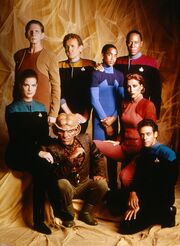
The first season promotional image of the cast of Deep Space Nine
Starring [ ]
- Avery Brooks as Commander / Captain Benjamin Sisko
Also starring [ ]
- Rene Auberjonois as Odo
- Nicole de Boer as Ensign / Lieutenant jg Ezri Dax ( 1998 - 1999 )
- Michael Dorn as Lt. Commander Worf ( 1995 - 1999 )
- Siddig El Fadil as Doctor Bashir
- Terry Farrell as Lieutenant / Lt. Commander Jadzia Dax ( 1993 - 1998 )
- Cirroc Lofton as Jake Sisko
- Colm Meaney as Chief O'Brien
- Armin Shimerman as Quark
- Nana Visitor as Major / Colonel Kira
Special guest stars [ ]
- Steven Berkoff as Hagath
- Rosalind Chao as Keiko O'Brien
- Jeffrey Combs as Weyoun
- Meg Foster as Onaya
- Jonathan Frakes as Thomas Riker / William T. Riker
- Louise Fletcher as Winn Adami
- Salome Jens as the Female Changeling
- Penny Johnson as Kasidy Yates
- Richard Kiley as Gideon Seyetik
- Richard Libertini as Akorem Laan
- Andrea Martin as Ishka
- Bill Mumy as Kellin
- Brock Peters as Joseph Sisko
- Andrew Robinson as Elim Garak
- Tim Russ as Tuvok
- William Sadler as Sloan
- Michael Sarrazin as Trevean
- Wallace Shawn as Grand Nagus Zek
- Kurtwood Smith as Thrax
- Patrick Stewart as Jean-Luc Picard / Locutus of Borg
- Leigh Taylor-Young as Yanas Tigan
- Clarence Williams III as Omet'iklan
Special appearances by [ ]
- Bernie Casey as Calvin Hudson
- James Darren as Vic Fontaine
- Robert Picardo as Lewis Zimmerman / Emergency Medical Holographic program
- Chris Sarandon as Martus Mazur
- Vanessa Williams as Arandis
Recurring characters [ ]
- Cecily Adams and Andrea Martin as Ishka
- Marc Alaimo as Gul Dukat
- Philip Anglim as Vedek Bareil
- Casey Biggs as Damar
- Jeffrey Combs as Liquidator Brunt
- Max Grodénchik as Rom
- Aron Eisenberg as Nog
- Hana Hatae as Molly O'Brien
- J.G. Hertzler as General Martok
- Barry Jenner as Admiral Ross
- David B. Levinson as Broik
- Kenneth Marshall as Michael Eddington
- Chase Masterson as Leeta
- Robert O'Reilly as Chancellor Gowron
- Duncan Regehr as Shakaar
- Andrew J. Robinson as Elim Garak
- Mark Allen Shepherd as Morn
Executive producers [ ]
- Rick Berman – Executive Producer
- Michael Piller – Executive Producer (1993–1995)
- Ira Steven Behr – Executive Producer (1995–1999)
Staff writers [ ]
- Ira Steven Behr , Staff Writer
- Hans Beimler , Staff Writer (1995–1999)
- René Echevarria , Staff Writer ( 1994 –1999)
- Ronald D. Moore , Staff Writer (1994–1999)
- Bradley Thompson , Staff Writer ( 1996 –1999)
- David Weddle , Staff Writer (1996–1999)
- Robert Hewitt Wolfe , Staff Writer (1993– 1997 )
Episode list [ ]
Season 1 [ ].
DS9 Season 1 , 19 episodes:
Season 2 [ ]
DS9 Season 2 , 26 episodes:
Season 3 [ ]
DS9 Season 3 , 26 episodes:
Season 4 [ ]
DS9 Season 4 , 25 episodes:
Season 5 [ ]
DS9 Season 5 , 26 episodes:
Season 6 [ ]
DS9 Season 6 , 26 episodes:
Season 7 [ ]
DS9 Season 7 , 25 episodes:
Related topics [ ]
- DS9 directors
- DS9 performers
- DS9 recurring characters
- DS9 studio models
- DS9 writers
- Character crossover appearances
- Undeveloped DS9 episodes
- Paramount Stage 4
- Paramount Stage 17
- Paramount Stage 18
- Star Trek: Deep Space Nine novels
- Star Trek: Deep Space Nine comics (IDW)
- Star Trek: Deep Space Nine comics (Malibu)
- Star Trek: Deep Space Nine comics (Marvel)
- Star Trek: Deep Space Nine soundtracks
- Star Trek: Deep Space Nine on VHS
- Star Trek: Deep Space Nine on LaserDisc
- Star Trek: Deep Space Nine on DVD
External links [ ]
- List of Star Trek: Deep Space Nine characters at Wikipedia
- Star Trek: Deep Space Nine at Memory Beta , the wiki for licensed Star Trek works
- Star Trek: Deep Space Nine at the Internet Movie Database
- Star Trek: Deep Space Nine at TV.com
- Star Trek: Deep Space Nine episodes at the iTunes Store
- Star Trek: Deep Space Nine at StarTrek.com
- Star Trek: Deep Space Nine at Wikiquote
- 1 Daniels (Crewman)
- 3 Calypso (episode)
Log in or sign up for Rotten Tomatoes
Trouble logging in?
By continuing, you agree to the Privacy Policy and the Terms and Policies , and to receive email from the Fandango Media Brands .
By creating an account, you agree to the Privacy Policy and the Terms and Policies , and to receive email from Rotten Tomatoes and to receive email from the Fandango Media Brands .
By creating an account, you agree to the Privacy Policy and the Terms and Policies , and to receive email from Rotten Tomatoes.
Email not verified
Let's keep in touch.

Sign up for the Rotten Tomatoes newsletter to get weekly updates on:
- Upcoming Movies and TV shows
- Trivia & Rotten Tomatoes Podcast
- Media News + More
By clicking "Sign Me Up," you are agreeing to receive occasional emails and communications from Fandango Media (Fandango, Vudu, and Rotten Tomatoes) and consenting to Fandango's Privacy Policy and Terms and Policies . Please allow 10 business days for your account to reflect your preferences.
OK, got it!
Movies / TV
No results found.
- What's the Tomatometer®?
- Login/signup
Movies in theaters
- Opening this week
- Top box office
- Coming soon to theaters
- Certified fresh movies
Movies at home
- Fandango at Home
- Netflix streaming
- Prime Video
- Most popular streaming movies
- What to Watch New
Certified fresh picks
- Hit Man Link to Hit Man
- Am I OK? Link to Am I OK?
- Jim Henson Idea Man Link to Jim Henson Idea Man
New TV Tonight
- The Boys: Season 4
- Bridgerton: Season 3
- Presumed Innocent: Season 1
- The Lazarus Project: Season 2
- The Big Bakeover: Season 1
- How Music Got Free: Season 1
- Love Island: Season 6
Most Popular TV on RT
- Star Wars: The Acolyte: Season 1
- Eric: Season 1
- House of the Dragon: Season 2
- Sweet Tooth: Season 3
- Evil: Season 4
- Dark Matter: Season 1
- Ren Faire: Season 1
- Tires: Season 1
- Star Wars: Ahsoka: Season 1
- Best TV Shows
- Most Popular TV
- TV & Streaming News
Certified fresh pick
- Star Wars: The Acolyte: Season 1 Link to Star Wars: The Acolyte: Season 1
- All-Time Lists
- Binge Guide
- Comics on TV
- Five Favorite Films
- Video Interviews
- Weekend Box Office
- Weekly Ketchup
- What to Watch
Glen Powell Movies Ranked by Tomatometer
Star Wars TV Shows Ranked by Tomatometer
What to Watch: In Theaters and On Streaming
Movie Re-Release Calendar 2024: Your Guide to Movies Back In Theaters
Vote For the Best Movie of 1999 – Round 4
- Trending on RT
- Netflix's Best Movies
- Vote: 1999 Movie Showdown
Season 1 – Star Trek: Deep Space Nine
Where to watch, star trek: deep space nine — season 1.
Watch Star Trek: Deep Space Nine — Season 1 with a subscription on Paramount+, or buy it on Fandango at Home, Prime Video.
What to Know
Deep Space Nine 's first season lays the groundwork for what could be the grittiest Star Trek series yet.
Critics Reviews
Audience reviews, cast & crew.
Avery Brooks
Cmdr. Benjamin Sisko
Rene Auberjonois
Alexander Siddig
Dr. Julian Bashir
Terry Farrell
Lt. Jadzia Dax
Cirroc Lofton
Colm Meaney
Chief Miles O'Brien
More Like This
Season info.
- More to Explore
- Series & Movies
Published Jun 2, 2023
Leaving Behind: How the Deep Space Nine Finale Added Depth to the Franchise
'What You Leave Behind' celebrates what the space station had become over the past seven years.

StarTrek.com
From its earliest concepts, Star Trek: Deep Space Nine was intended to defy the conventions and expectations set by earlier Star Trek shows, and the finale, “ What You Leave Behind ” brings those efforts to a conclusion that is, expectedly, not what was expected.
“What You Leave Behind” at first seems out-of-place compared to the conclusions of the previous series. Star Trek : The Original Series ends with movies showing the crew being given a new ship to take one last loop around the galaxy, while Star Trek: The Next Generation showed Picard again facing Q, whom he met on the ship’s first assignment. Both of those endings met the expectation that Star Trek was about exploration, the journey, and the unknown. It begs the question, “What does a story about leaving home have to do with a show about space exploration?” Deep Space Nine was the first installment in the franchise to really take a look at the place where our voyage began and understand its importance in the larger context. When telling a story of “home” and the place of departure, the story changes from one of outer space to one of inner space — inside the minds of the characters and audience.
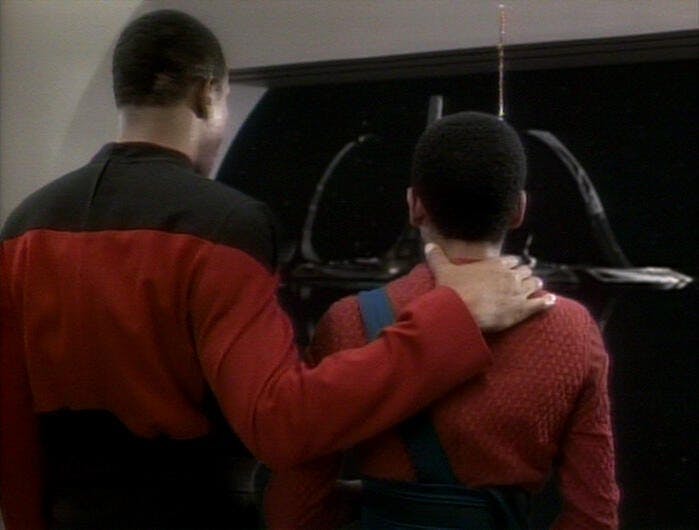
Prior to DS9, the concept of “home” was given precious little screen time. Earth is never shown in TOS, except in the context of time travel. The Earth of the 23rd Century is conspicuously absent. In Star Trek IV: The Voyage Home , the titular “home” ultimately refers to a new Enterprise and a new chance to return to the stars. The Next Generation occasionally has the crew return to our planet, but almost always under crisis conditions. Picard says in Star Trek: First Contact , “I tend to think of the ship as my home, but if it’s Earth you’re talking about, I try to get back whenever I can.”
For the crew of Star Trek: Voyager , home wasn’t even a possibility. While the prospect of getting home is the inciting incident for many of the series’ episodes, the emotional connection the crew have to their home planet is only given surface-level analysis. Rather than look at the home front, the drive to boldly go was the original pitch to Gene Roddenberry’s “Wagon Train to the Stars,” asking people how far we could take ourselves.
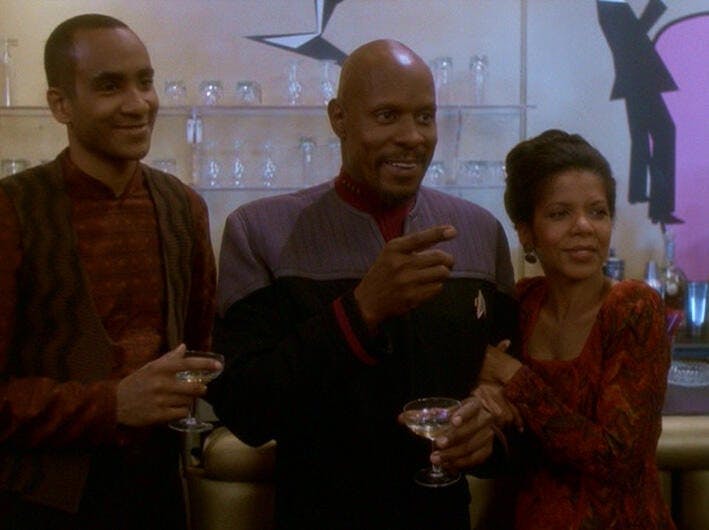
Without a starting point or a home to leave, a journey has no context. “What You Leave Behind” was a celebration of what the space station had become over the past seven years. Season 1 found the station a broken, damaged husk. Ceiling lights flickered, consoles sparked, and violent incidents on the station were frequent. Sometime over the next few years, it is difficult to say exactly when, the station became a friendly place. Banners hung from the ceiling, families grew larger, and children grew older. Just as the new crew of the station found it a hostile environment, longtime Star Trek fans at first approached this new concept of a series with caution and trepidation. Like moving into a new house and years later realizing it has become yours, Deep Space Nine had gone from being “that weird Star Trek that wasn’t on the Enterprise ” to a home. With the final episode, we (characters and viewers alike) had to leave that home.
Star Trek: Deep Space Nine — The Journey
It is not difficult to understand how it took several iterations of Star Trek for a story to come to light that treats the departure with the same reverence as the journey. Looking through Gene’s own words, there are many examples of him pondering the human drive to explore, to become better than we are. His views on humanity’s start were comparatively limited. However, the Great Bird of the Galaxy did have this to say, "Human beings have got their toes in the mud and their heart and souls high in the heavens. But the mud is important. It is the mud between our toes that allows us to dance. And we must be all of those things." Acknowledging that the “toes in the mud” is what gives us the support and strength to reach for the heavens is huge, and for a man who passed away years before “What You Leave Behind” was written, it reflects a similar perspective.
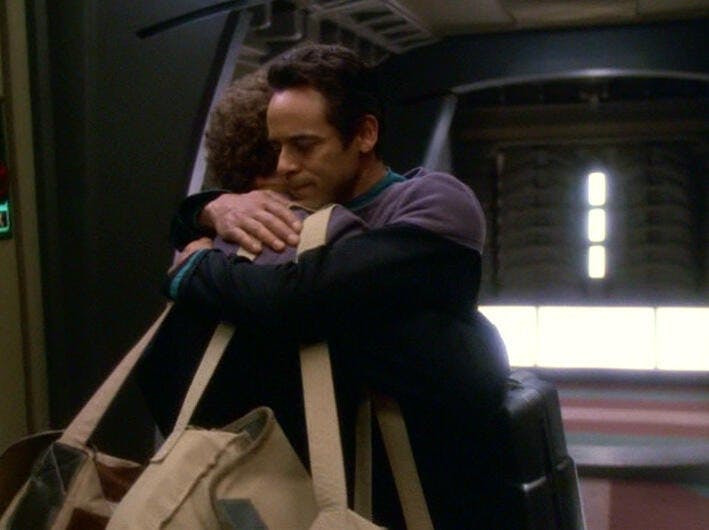
While the theme of “What You Leave Behind” might have been an unexpected choice for a story in 1999, modern Star Trek has returned to it with an increasing level of nuance. The result was a finale that capitalized on the sense of belonging that Deep Space Nine had built over seven seasons and delivered a message that had an emotional impact Trek had never previously managed.
In Season 3 of Star Trek: Discovery , the crew have made the decision to save life in the galaxy by committing themselves to a one-way trip 900 years into the future. With little hesitation, they separate themselves from everyone they ever knew and every dream they’d ever had, simply because doing so would eliminate the threat their starship crew had uncovered. Emerging on the other side of the time jump, they don’t find a better version of the world they left; instead, they find the future is a skeleton of what their past was. In that moment, it seems as if the trip cost them everything.
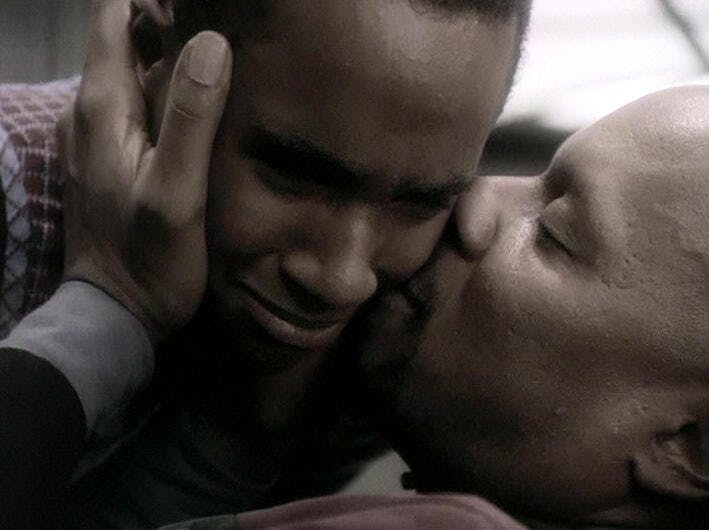
Put in that context, it’s easy to see the similarity in the decision to jump 900 years into the future, with Sisko being selected by the Prophets to join them in their nonlinear existence. It was not Sisko’s decision, but he was told a separation was coming, and that his inescapable fate would be crucial to both of his duties to Starfleet and Bajor. For both Sisko and the crew of the Discovery , the journey from home is more costly to the individual because they’re aware their loved ones left behind may never experience closure. It’s a good moment to wonder what the continuing mission does to the people who don’t get to go along.
Believing that one always has a clear vision of what the future holds can be deceptive. The entire premise of Star Trek: Picard focuses on Jean-Luc’s attempt to deal with the biggest losses of his career. Faced with the grief of losing his best friend coupled with a career-ending disappointment in Starfleet’s commitment to serving the greater good, he does the only thing that makes sense — he returns to his family’s vineyard and attempts to make a quiet life for himself. Why would he not find a distant moon or travel to parts unknown? Because, at this time in his life, Jean-Luc has decided that Earth is more than a place to return to “whenever he can.” More than that, he is attempting to provide new roots for a population of displaced Romulans — people who have no home to return to. The solution was not to send them away; it was to give them a place with walls and soil.
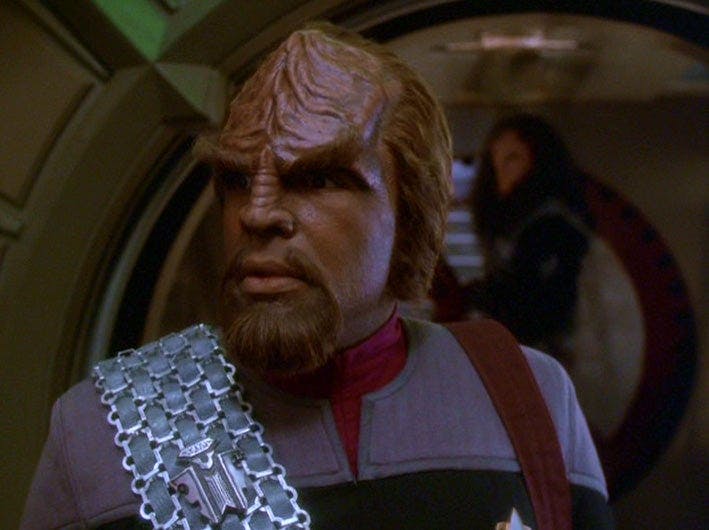
Worf had similarly excluded the possibility of ever returning to Qo’noS. Being able to rejoin the Klingon home world as an ambassador, after having his entire house declared outcasts, opens a door for him wider than Picard’s whole vineyard. The ability to look back at a chapter of your life that you’d previously considered closed, and find the potential to return to it, is a rare opportunity in life. Humans have numerous blind spots when it comes to understanding what our future could potentially hold. No matter where the journey has taken you, your destination may be the same as your starting point.
It’s important to recognize, however, that the inward struggle is not separate from the outer struggle, and at times, is powerless against it. The dedication to duty, a constant theme across all Star Trek series, illustrates this very well. The opening of the first episode of Star Trek: Strange New Worlds finds Captain Pike waking up in his Montana cabin. Having been given a detailed glimpse of a future accident that will forever alter his life, he retreats from the command of his ship to his home on Earth to process this trauma. His reluctance to leave carries an additional layer of weight for him; not only does Christopher need to prepare for a journey beyond his planet, but he also needs to prepare for a journey beyond his mortal life. This battle fatigue brings him full circle, enlightening us to the broken man we met in “The Cage.”
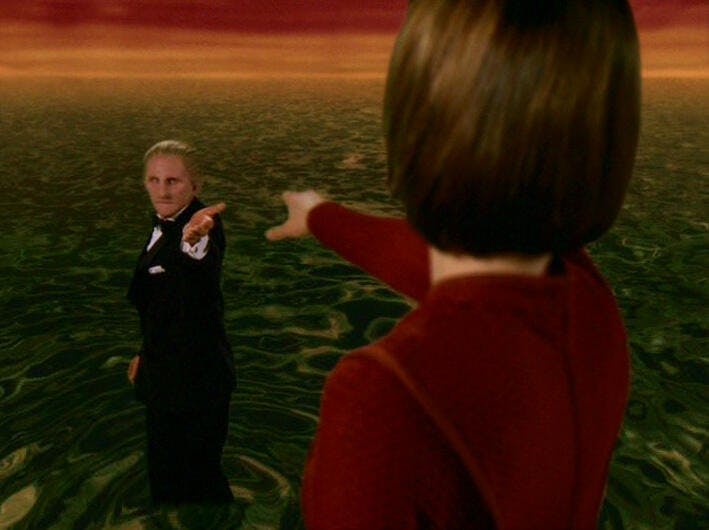
Similarly, Odo’s decision to leave and remain with the Great Link is one of the episode’s most bitter goodbyes. Odo had found a happy, meaningful life on the station, and like Pike, was pulled away out of a sense of duty. History is full of stories of people who would have been content to remain where they were, had they not been caught in trends and forces much larger than themselves.
Consistently across all these examples is the idea that, when the time to leave presents itself, the choice is often out of our hands. When it was announced that the end of Season 7 would be the end of Deep Space Nine , fans had little say in the matter. We joined Ira Steven Behr in a mixture of grief and the determination to see the finale of the show be the absolute best it could be. It’s reported that when it was time to dismantle the set and surrender the stage, Behr chose to stay behind and be the last relic of Deep Space Nine ’s production to leave. He waited until every set piece was removed and remained even after the last of the electrical and maintenance crew had left. In his own words, “I have many years to not be here.” His intent was to appreciate fully what was about to pass, knowing that the years ahead would be full of new and different challenges.
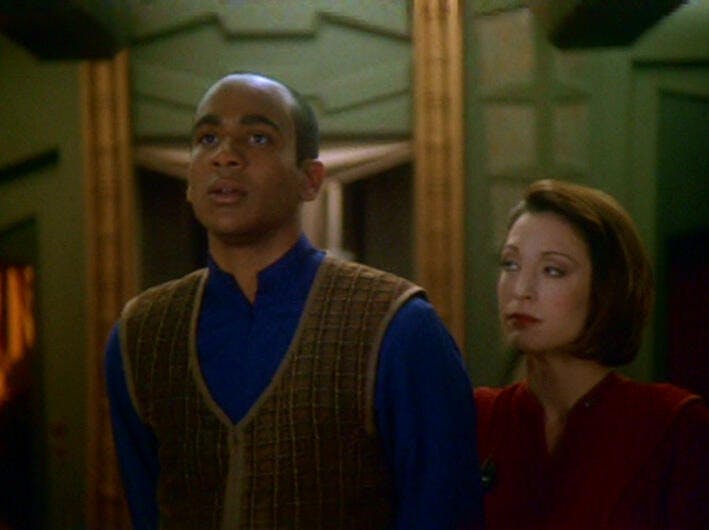
It is that feeling captured in “What You Leave Behind” that resonates with the audience. That is the connection that Star Trek made for the first time. They weren’t being asked to relate to being given a new ship and a new mission, and they weren’t being put on trial by Q to answer for the sins of humanity. The audience was being asked to reflect on the adventures they had already been through, and the mission they would give themselves from this point forward. Each viewer will come to “What You Leave Behind” bringing their own history, life story, and perspective. They will each leave with their own reflections, and they will each leave behind their old sense of self.
This article was originally published on June 23, 2022.
Get Updates By Email
Stay tuned to StarTrek.com for more details! And be sure to follow @StarTrek on Facebook , Twitter , and Instagram .
Aaron Bossig (he/him) studies science fiction and the various ways it makes real life better. He is the host of the podcast Hungry Trilobyte, and resides in Oklahoma with his family. You can follow him on Twitter under @aaronbossig.
Star Trek: Discovery Seasons 1-4 are streaming exclusively on Paramount+ in the U.S., the UK, Canada, Switzerland, South Korea, Latin America, Germany, France, Italy, Australia and Austria. Seasons 2 and 3 also are available on the Pluto TV “Star Trek” channel in Switzerland, Germany and Austria. The series streams on Super Drama in Japan, TVNZ in New Zealand, and SkyShowtime in Spain, Portugal, Poland, The Nordics, The Netherlands, and Central and Eastern Europe and also airs on Cosmote TV in Greece. The series is distributed by Paramount Global Content Distribution.
In addition to streaming on Paramount+ , Star Trek: Picard also streams on Prime Video outside of the U.S. and Canada, and in Canada can be seen on Bell Media's CTV Sci-Fi Channel and streams on Crave. Star Trek: Picard is distributed by Paramount Global Content Distribution.
Star Trek: Strange New Worlds streams exclusively on Paramount+ in the U.S., U.K., Australia, Latin America, Brazil, South Korea, France, Italy, Germany, Switzerland and Austria. In addition, the series airs on Bell Media’s CTV Sci-Fi Channel and streams on Crave in Canada and on SkyShowtime in the Nordics, the Netherlands, Spain, Portugal and Central and Eastern Europe. Star Trek: Strange New Worlds is distributed by Paramount Global Content Distribution.
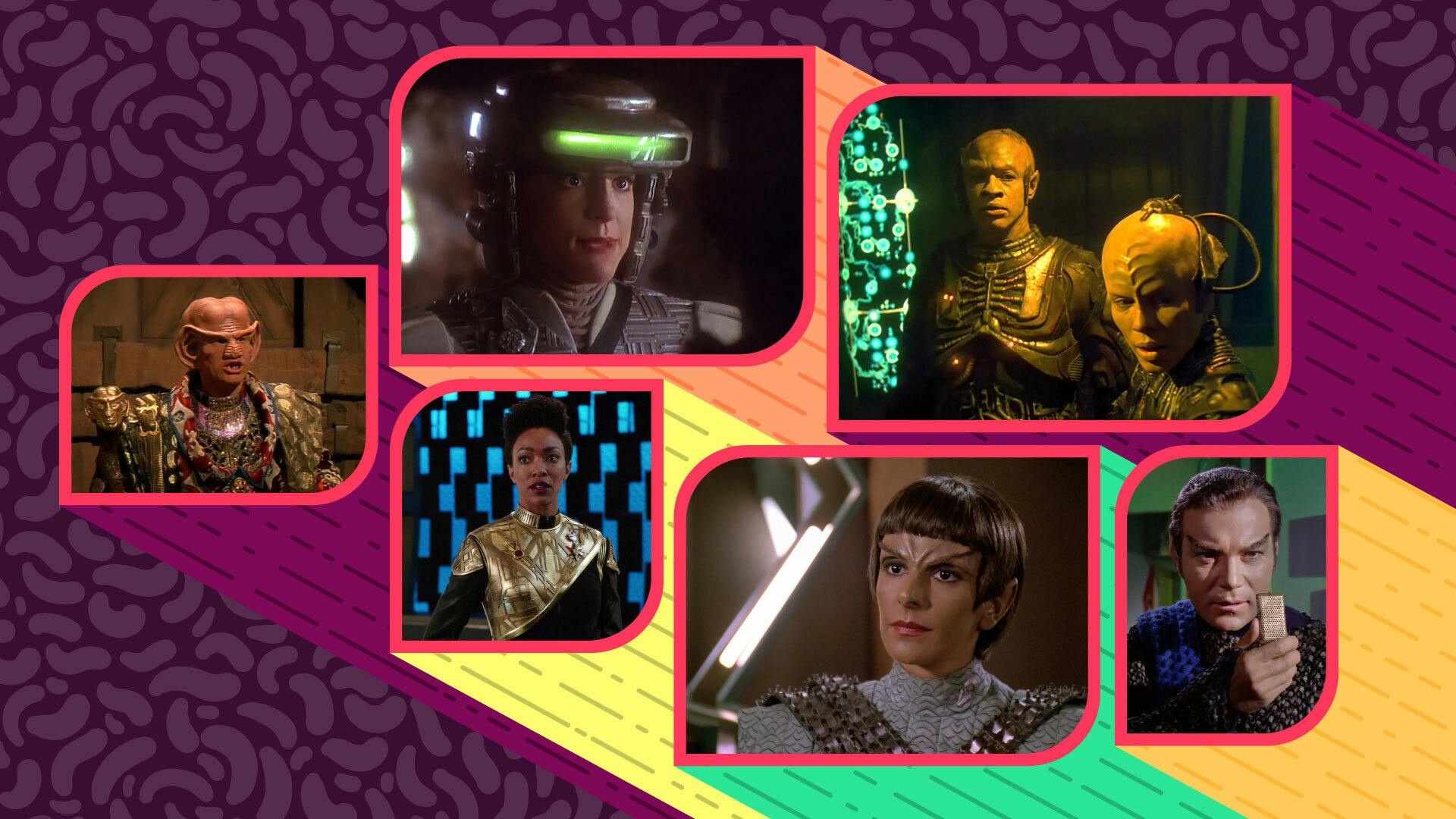
Best Star Trek: Deep Space Nine episodes
We countdown the best Star Trek: Deep Space Nine episodes from an ambitious and emotionally charged series.

Ranking the best Star Trek: Deep Space Nine episodes is no easy task considering there were 176 of them spread over seven seasons. Premiering in 1993 and ending in 1999, Deep Space Nine (DS9) warped into new territory for Trek. Set mostly on a space station rather than a starship, DS9 was grittier than The Next Generation (TNG) and more grounded than Voyager. We saw the first black lead in the commanding presence of Avery Brooks, and delved deeper into the affairs of the Bajorans, Cardassians, and Ferengi.
Although a slower burn than its predecessors and successors, DS9 eventually crackled into some seriously ambitious story arcs. Like other Treks, the early seasons could be sketchy, but those who invested in the longer-form sequences were handsomely rewarded.
Situated next to a wormhole, and Bajor, which was occupied by the Cardassians, the show’s writers handled vast themes and complicated plots. War with The Dominion led to deeply atmospheric high stakes and moral ambivalence. DS9 was political, emotional, and innovative, but as always it was strong characters who anchored these stories.
The likes of Odo (Rene Auberjonois), Dax, and Kira (Nana Visitor) were complex personalities. There was the wily and engaging Garak (Andrew Robinson) and charming Bashir (Alexander Siddig). While TNG fans got to see other sides to Chief O’Brien and Worf. Commander, and later Captain, Sisko held it together with a thinking man’s masculinity that was neatly foiled by “old man” Jadzia (Terry Farrell).
It was a difficult choice to whittle down the contenders, but this list of the best Star Trek: Deep Space Nine episodes should provide some insight into what made this show such a special and layered entry in Star Trek canon.
While you’re at it, also check out our best Star Trek: The Original Series episodes and best Star Trek: The Next Generation episodes lists and see if you agree.
10. Emissary

- Season 1, Episode 1
- Original airdate: January 3, 1993
Deep Space Nine’s pilot opens during a pivotal confrontation in Federation history, against the Borg in the Battle of Wolf 359. Aboard the U.S.S. Saratoga we see Lt. Commander Benjamin Sisko face overwhelming odds, and the death of his beloved wife Jennifer. Three years later, Sisko, now a commander, has to face the man who led the Borg attack: Captain Picard, who’d been assimilated and become Locutus.
It’s a tense meeting, with Sisko barely hiding his disdain while Picard is equally tough. It’s a faceoff worthy of Pacino and De Niro in Heat in the Trek canon, and well worth rewatching.
Emissary is an episode full of incident: involving gambling, special orbs, subterfuge, politics, and non-corporeal aliens, to name a few, and benefits from a snappy script and charming introductions to the main cast. In Sisko’s interactions with the wormhole aliens, Emissary also features some unexpectedly deep wisdom, and holds up as one of Star Trek’s best episodes.
9. Whispers
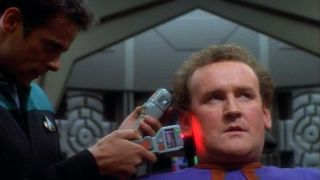
- Season 2, Episode 14
- Original airdate: February 6, 1994
Chief O’Brien (Colm Meaney) was introduced in The Next Generation, but had a much more substantial role in Deep Space Nine. Catching up with Miles and his family was often a treat, while the chief’s dependably solid demeanor was put through the wringer on many occasions.
In Whispers, we have a mystery, as O’Brien returns to the station from an away mission only to find his crewmates, and his wife Keiko (Rosalind Chao), behaving oddly. Things are not quite right and the episode steadily builds the eeriness until an emotional and unexpected ending.
8. Improbable Cause & The Die is Cast
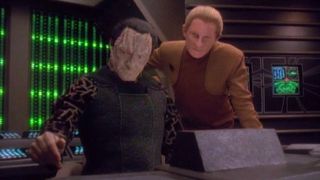
- Season 3, Episode 20 & 21
- Original airdate: April 24, 1995 & May 1, 1995
The wily and unctuous Cardassian known as Garak is one of Star Trek’s most compelling characters. Posing as a humble yet charismatic tailor, the façade belies a supremely subtle intelligence. In this two-parter Odo plays detective as a bomb detonates in Garak’s shop.
Uncovering a plot, tables turn as we learn more about Garak’s connections and start to see the limits of his charm and how his persona might’ve been developed as a survival tactic. It’s also notable for an intense interrogation culminating in hard-to-watch scenes as Garak is forced to commit torture.
7. The Siege of AR-558
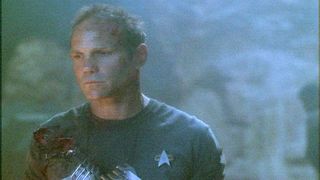
- Season 7, Episode 8
- Original airdate: November 18, 1998
This episode hones in on the atrocious realities of war as the U.S.S. Defiant makes a supply run to the barren planet AR-558. Beaming down to a heavily depleted Starfleet garrison, with morale low as the troops have been assailed for months, Sisko decides to stay and help these desperate souls.
The Siege of AR-558 does not shy away from the dread and grimness of combat and war, bringing the camera close rather than zooming far out to space. Pair this with the follow-up It’s Only a Paper Moon (season 7, episode 10) that focuses on the PTSD one of the DS9 crew suffers from the siege.
6. The Way of the Warrior
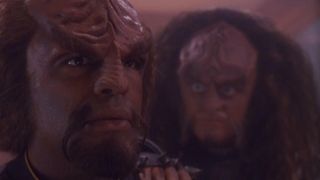
- Season 4, Episode 1
- Original airdate: October 2, 1995
This double-length episode that opens season four is an example of DS9 at its best. Exploring the political machinations of the Klingons as paranoia runs riot since the shapeshifters are infiltrating the ranks of their foes, the fearsome species is seemingly looking to revert to their old ways of warring and conquering.
Starfleet turns to its favorite Klingon to find out exactly what’s going on: Worf (Michael Dorn). This episode is also notable for a wonderfully sly scene where Sisko finds a Garak-shaped way of informing the Cardassians of a Klingon invasion.
5. Trials and Tribble-ations
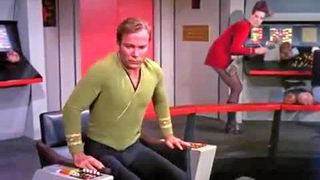
- Season 5, Episode 6
- Original airdate: November 4, 1996
This is one of the most beloved episodes in the entire Star Trek canon, and why? Three words: James Tiberius Kirk. Several of DS9’s officers on the Defiant are thrown back in time and encounter none other than the NCC-1701 Constitution-class U.S.S. Enterprise. A Klingon wants to assassinate Kirk and it’s up to Sisko and crew to foil his plot.
This episode was conceived as a tribute to the original series and is one of the most lavishly budgeted of the entire series. And it shows. From the sets to the throwback costumes Jadzia and Sisko have to don, this is a detailed recreation of that era. The episode was also a welcome change in tone, full of humor and plenty of Easter eggs and callbacks to keep Trekkies busy.
Watch as tribbles invade the Enterprise and the DS9 crew seamlessly interact with Kirk and his crew. It’s a thrill too when Worf remarks on the ridgeless Klingons of this era’s Trek, a discrepancy that was later explained via Archer’s Enterprise.
4. Sacrifice of Angels
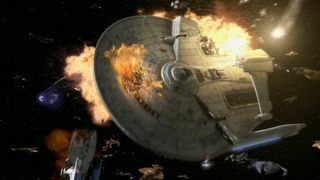
- Season 6, Episode 6
- Original airdate: November 3, 1997
Star Trek fans may have gotten used to story arcs, but they used to be somewhat rare. They involved the Borg in TNG, but Deep Space Nine really paved the way, taking the series into more serialized form. Season six of DS9 followed the war with the Dominion, and Sacrifice of Angels culminated a six-episode arc that is as exciting and dramatic as anything Trek has attempted before or since.
Sisko makes bold decisions as he seeks to wrest influence from the Dominion while viewers can enjoy some of the biggest space fights in the series. But away from the pyrotechnics, it’s the more profound and philosophical moments that really make this shine.
3. Far Beyond The Stars
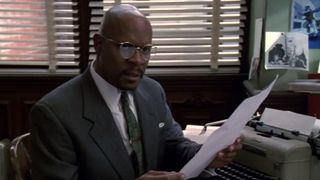
- Season 6, Episode 13
- Original airdate: February 11, 1998
Out of nowhere, this episode materialized to become one of DS9’s most memorable and deeply felt. It focuses on Benjamin Sisko, except he’s having a vision, and suddenly we’re transported to 1950s New York and Sisko has become Benny Russell, a writer for science fiction magazine Incredible Tales. Inspired by a drawing, Russell pens an inspired story about a space station and its black captain. But since it's mid-twentieth century America, Russell's boss, the editor, says it’s not believable to have a black captain.
Featuring the regular DS9 cast, it’s a treat to see the likes of Quark (Armin Shimmerman), Odo, and Worf as regular New Yorkers. But Far Beyond The Stars stands out for a towering performance from Avery Brooks as a writer who dares to dream but who is stricken by the racism of this time period. It’s an unfortunate fact that this episode still resonates in the twenty-first century, but, as the end suggests, it's possible to still dream of a more utopian future.
2. The Visitor
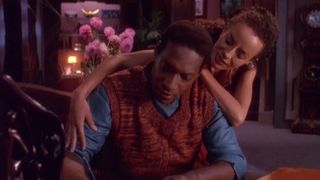
- Season 4, Episode 2
- Original airdate: October 9, 1995
Using a science fiction trope of being lost to time and space, this episode reaches toward the universal. It achieves it in a brusque yet elegant script and a superb performance from Tony Todd as the older Jake (trivia: he also plays Worf’s brother Kurn in DS9 episode Sons of Mogh, and on TNG).
The Visitor finds Sisko trapped in subspace by a freak accident. His son, Jake, then proceeds to spend the rest of his life trying to bring his father back in this emotional tour de force. For those with fathers – whether absent, role model, or something in between – or are themselves fathers, this episode hits hard.
1. In the Pale Moonlight
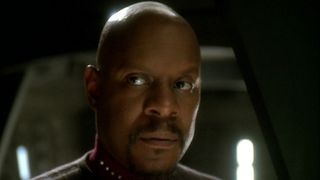
- Season 6, Episode 19
- Original airdate: April 15, 1998
While Caradassians are major antagonists, it’s the shapeshifters and The Dominion War that form the deeper structure of DS9 and often shape the most ambitious and morally complex plots. This particular episode reveals the extent to which Sisko and Starfleet are willing to cross moral boundaries to change the odds in their favor.
Avery Brooks and Andrew Robinson put in stellar performances as Sisko enlists Garak's help to bring the Romulans into the war to assist the Federation, and we see just how far Sisko is willing to go to achieve that.
As Sisko notes in his log, “the road to hell is paved with good intentions. I laid the first stone…” In the Pale Moonlight shows how easily good men can turn to devilry and how each step on that road is marked by rationalizations; yet while you’d want Picard at the negotiating table it’s probably Sisko who you’d turn to to win a war.
Join our Space Forums to keep talking space on the latest missions, night sky and more! And if you have a news tip, correction or comment, let us know at: [email protected].
Get the Space.com Newsletter
Breaking space news, the latest updates on rocket launches, skywatching events and more!
Lu-Hai Liang is a British Chinese writer and reporter. He has a degree in multimedia journalism and has written about culture for The Atlantic, BBC, CNN, Eurogamer, IGN, and Wired among others. He was based previously in Beijing for six years and reported on China’s changing society and development in business and technology. Generally, he likes sci-fi, video games, and space.
'Star Wars: The Acolyte' episodes 1 & 2: Who's really behind the Jedi murder mystery?
Terrifying new 'Alien: Romulus' trailer unleashes the facehuggers (video)
NASA wants new ideas for its troubled Mars Sample Return mission
Most Popular
- 2 Virgin Galactic eyes June 8 for final commercial spaceflight on VSS Unity spaceplane
- 3 SpaceX launching 22 Starlink satellites from Florida tonight
- 4 Jupiter's raging gas cyclones may actually mirror Earth's oceans. Here's how
- 5 Why is Neptune's magnetic field so weird? An exotic molecule may be the answer
A Quarter-Century Later, Deep Space Nine’s Finale is a Bridge Between Old and New Star Trek
We’ve left this era behind.

In the final season of Star Trek: Deep Space Nine , our heroes take desperate measures to achieve victory in a bitter war that’s engulfed billions of lives across the galaxy. They also play a rousing game of baseball.
Wedged between The Next Generation , a beloved revival, and Voyager , a mediocre Borg adventure factory , Deep Space Nine’s creators were largely free to take their black sheep where they saw fit. The result was a series that moved Star Trek towards nuanced serialized storytelling , while still finding time to dabble in episodes about Vulcan serial killers and ill-advised crossdressing. When it wrapped up both its serious and silly stories in one big finale, DS9 built a bridge between the one-off episodes of Star Trek past and the relentless season-long sagas of modern shows like Discovery and Picard.
“What You Leave Behind” had to conclude the Federation’s brutal conflict with the Dominion, while also providing closure to Captain Sisko’s uneasy role as a Bajoran religious figure. Both storylines had percolated in the background for years before exploding in DS9’s final seasons, and both highlighted the strengths of the show’s unique fixed setting. Set in a space station above a Bajor struggling to survive its newfound independence and adjacent to a wormhole leading to a far-flung region of space defined by the Dominion’s cruelty, the set-up allowed the consequences of our heroes’ adventures to fester for years.

In an eventful final season, Major Kira (Nana Visitor) is given command of Deep Space Nine and learns the infield fly rule.
The war against the Dominion — essentially an anti-Federation that subjugated new members to make itself more powerful and conniving — is the finale’s strongest element. The multi-season struggle had touched on weighty themes like war crimes and the morality of violent resistance, and it’s satisfying to see Sisko and his stalwart crew battle their way to a melancholy victory. The whole saga is one of the few times Star Trek embraced an epic scope rather than focus on a single ship’s isolated adventures, and seeing characters we knew for years become key cogs in a grand war machine was a somber escalation of the stakes.
Captain Sisko’s personal denouement was less successful. His unique connection to the mysterious aliens living in the wormhole, which the Bajorans worship as prophetic gods, worked well as a symbol of his series-long transition from jaded cynic to fierce protector of Bajor. But “What You Leave Behind” attempted to give this spiritual tale an action-y finale featuring Gul Dukat, a long-running Cardassian villain and occasional uneasy frenemy. Dukat’s saga as an opportunistic Dominion lackey reached a natural conclusion in Season 6, yet he was brought back as a sort of Bajoran Antichrist stuffed full of ham. It felt like an attempt to cram the finale of Raiders of the Lost Ark into the end of Saving Private Ryan.

In one of the finale’s weaker moments, Gul Dukat (Marc Alaimo) shows up like he wandered in from a ‘90s FMV game.
But a quarter-century later, what stands out are the side stories “What You Leave Behind” wraps up. While Deep Space Nine’s seventh season built towards this two-part finale, it also dabbled in asides no sci-fi drama could spare time for today. Featuring a whopping 26 episodes, Season 7 focused on the horrors and heroism of war, but also took a minute to check in on the mirror universe, stage a holosuite heist, and play ball with an arrogant Vulcan. The pacing is glacial compared to a modern show like Picard, and not every episode was a winner, but these asides enhanced the main storyline rather than distract from it. Life, even during galactic megawar, goes on.
This blend of the critical and mundane is why our heroes celebrate their grand victory in a holosuite simulation of a ‘60s Vegas lounge. The Season 6 introduction of Vic Fontaine, a holographic Rat Pack knockoff, was derided as silly and self-indulgent, and 24th-century humans and aliens turning to a pretend crooner for romantic advice and emotional solace should have been ridiculous. But Fontaine was allowed to develop across B-stories and dedicated episodes, a decision that culminated in the superb Season 7 episode “It's Only a Paper Moon.” Nog, once a comic-relief side character, turns Fontaine’s lounge into his personal fantasy realm to cope with losing a limb in battle, and the frank look at PTSD was so effective that giving Fontaine a proper sendoff in “What You Leave Behind” felt natural.

Star Trek and lounge singing, together at last.
A hokey hologram getting screentime speaks to the sheer scope of the finale, but despite its busy-ness, it managed to leave most of its characters in satisfying places. Today, the episode title offers an unintended second meaning, as Star Trek — and television in general — has largely abandoned Deep Space Nine’s supersized seasons and leisurely storytelling pace. Amid its many side stories, DS9 helped move Trek towards the modern serial format, which can make the lean 10-episode seasons of Picard feel like nothing but one exhausting crisis after another. Such momentum can be thrilling, but we’ve lost something in not getting to better know our heroes as they enjoy a little downtime.
With Discovery over , Lower Decks on the way out, and several new shows and movies in the works, Star Trek is once again entering a season of change . It’s difficult to imagine big-budget sci-fi ever returning to 26-episode seasons, but revisiting “What You Leave Behind” still offers a valuable lesson. Viewers wanted to see Deep Space Nine’s heroes triumph over the Dominion not because their battles had been so dramatic, but because we’d spent enough time with them to know they deserved peace.
- Science Fiction
- Cast & crew
- User reviews

Episode list
Star trek: deep space nine.

S4.E1 ∙ The Way of the Warrior

S4.E2 ∙ The Visitor

S4.E3 ∙ Hippocratic Oath

S4.E4 ∙ Indiscretion

S4.E5 ∙ Rejoined

S4.E6 ∙ Little Green Men

S4.E7 ∙ Starship Down

S4.E8 ∙ The Sword of Kahless


S4.E9 ∙ Our Man Bashir

S4.E10 ∙ Homefront

S4.E11 ∙ Paradise Lost

S4.E12 ∙ Crossfire

S4.E13 ∙ Return to Grace

S4.E14 ∙ Sons of Mogh

S4.E15 ∙ Bar Association

S4.E16 ∙ Accession

S4.E17 ∙ Rules of Engagement

S4.E18 ∙ Hard Time

S4.E19 ∙ Shattered Mirror

S4.E20 ∙ The Muse

S4.E21 ∙ For the Cause

S4.E22 ∙ To the Death

S4.E23 ∙ The Quickening

S4.E24 ∙ Body Parts

S4.E25 ∙ Broken Link
Contribute to this page.
- IMDb Answers: Help fill gaps in our data
- Learn more about contributing
More from this title
More to explore, recently viewed.
‘Star Trek: Deep Space Nine’ Ended 25 Years Ago: See the Cast In & Out of Alien Character
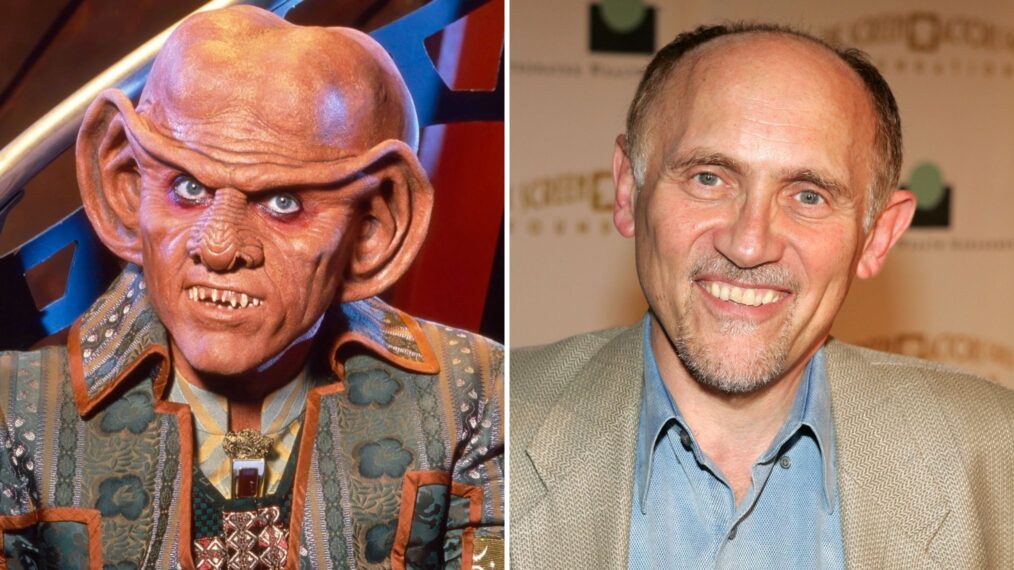
Star Trek: Deep Space Nine
- Starting 9: Scripted TV’s Most Unforgettable Baseball Teams
- 9 Long-Lasting Netflix Binges to Get You Through the Pandemic (or Just the Weekend)
While Starfleet crew members boldly go where no man has gone before — or, in Deep Space Nine ’s case, boldly stay put in a wormhole-adjacent space station — Star Trek ’s crew members are arguably the unsung heroes of the franchise. And one of those heroes is Michael Westmore, the makeup designer who crafted alien looks for the franchise for nearly 20 years.
Westmore earned two Emmy Awards and another five nominations for his work on Star Trek: Deep Space Nine . The syndicated series, created by Rick Berman and Michael Piller, followed Starfleet Commander Benjamin Sisko ( Avery Brooks ) and his crew as they manned the titular space station and contended with exploration, trade, politics, and conflict between two quadrants of the galaxy.
And with a cast of characters stocked with Bajorans, Cardassians, Changelings, Ferengi, Trill, and other alien species, Westmore and the other makeup artists certainly had their work cut out for them. “Challenges on Deep Space Nine were the same as Next Generation , same as Voyager , same as Enterprise ,” Westmore said in a 2004 Television Academy interview . “It’s like, you’re given a concept, figure it out, build it, paint it, and have it ready on the day they’ve requested.”
DS9 ran for seven seasons before coming to an end 25 years ago, when “What You Leave Behind” aired on June 2, 1999. A quarter-century on, check out the photo gallery below to see cast members in and out of their alien characters — and to hear what they said about the makeup magic.
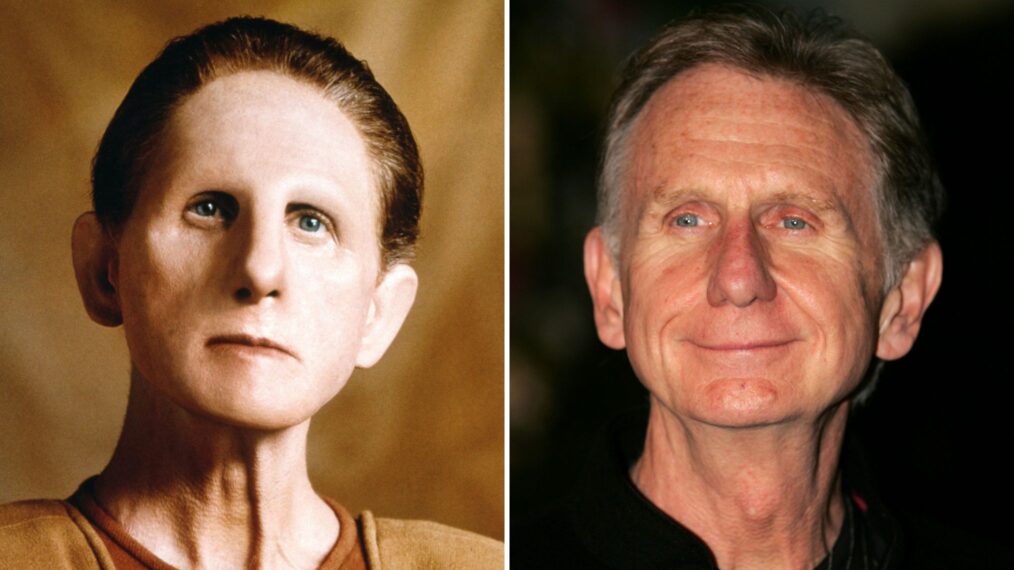
René Auberjonois as Odo
“I couldn’t eat really solid food,” the late actor recalled in the 2018 documentary What We Left Behind: Looking Back at Star Trek: Deep Space Nine , looking back on his time as DS9 ’s Changeling security chief. “I’d be in that makeup for hours and hours on end, and I think it affected my persona on set. People who didn’t know me thought I was probably as grumpy as the character Odo.”
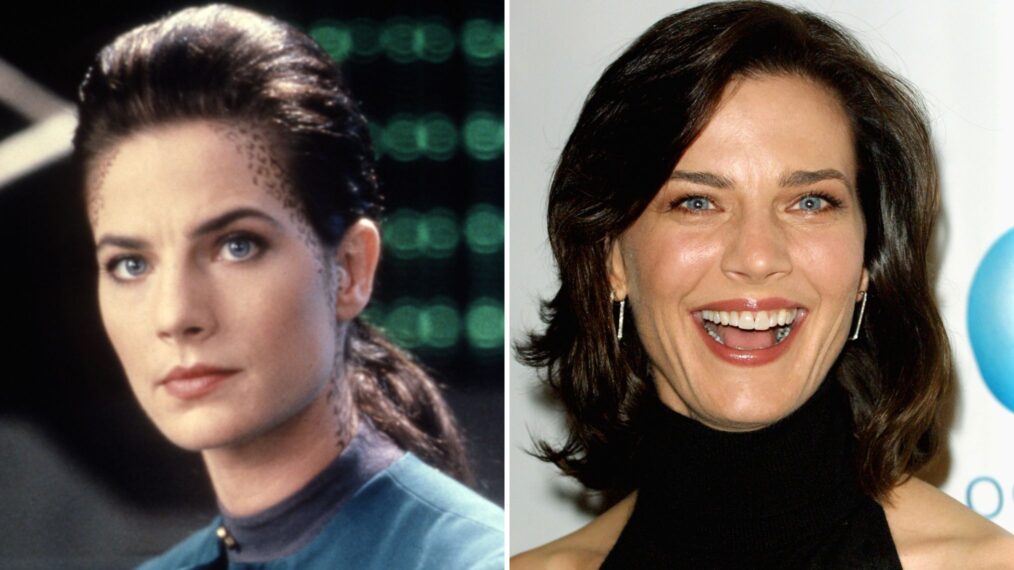
Terry Farrell as Jadzia Dax
Not only was Farrell the last original cast member hired, but she also had to re-shoot scenes after the makeup team opted to give her character, a Trill science officer, spots instead of a facial prosthetic. “I had a forehead, and they didn’t like how that looked,” she recalled to StarTrek.com in 2022. “So Michael Westmore came up with the spots and took out the forehead. So we had to re-shoot.”

Armin Shimerman as Quark
Shimerman endured three hours of makeup every day to get into his Ferengi barkeep character, as he said in an appearance on Live With Regis and Kathie Lee . “It’s not bad. Ladies do it all the time,” he quipped. “Michael Westmore … doesn’t believe in rubber masks. He believes that they don’t look real, they don’t work well with the actors’ faces, and all of his Emmys prove that he’s right, I guess.”
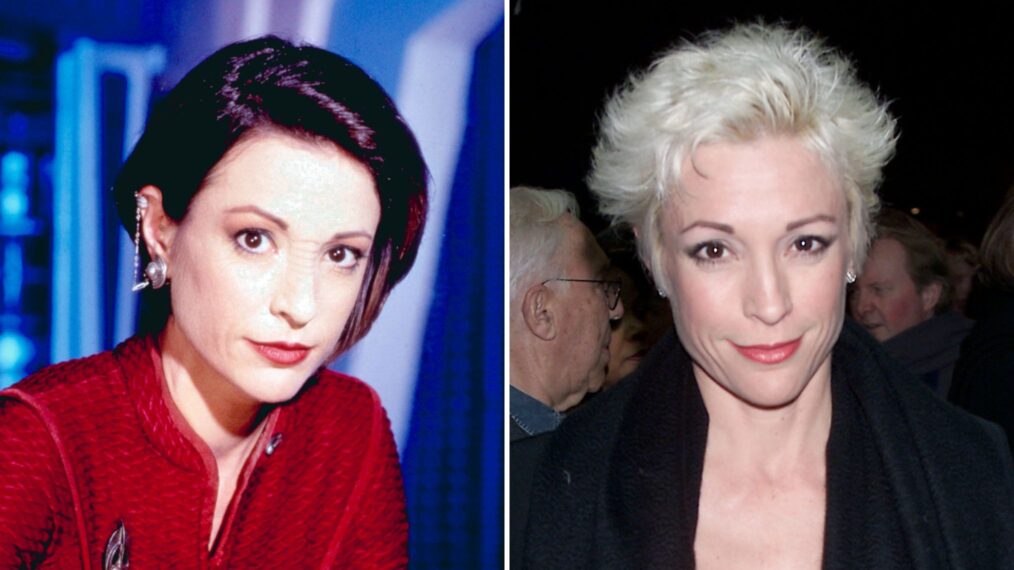
Nana Visitor as Kira Nerys
“It was very interesting, and I’m not sure what this was about psychologically still, but I was most comfortable in that makeup,” Visitor, who played the Deep Space Nine’s Bajoran second-in-command, told StarTrek.com in 2011. “When I had Kira’s makeup on, I was completely, physically comfortable, and I didn’t care if there were cameras or if people were taking pictures. It was such a comfortable, natural mask to me. I felt like I could allow everything I am to be.”
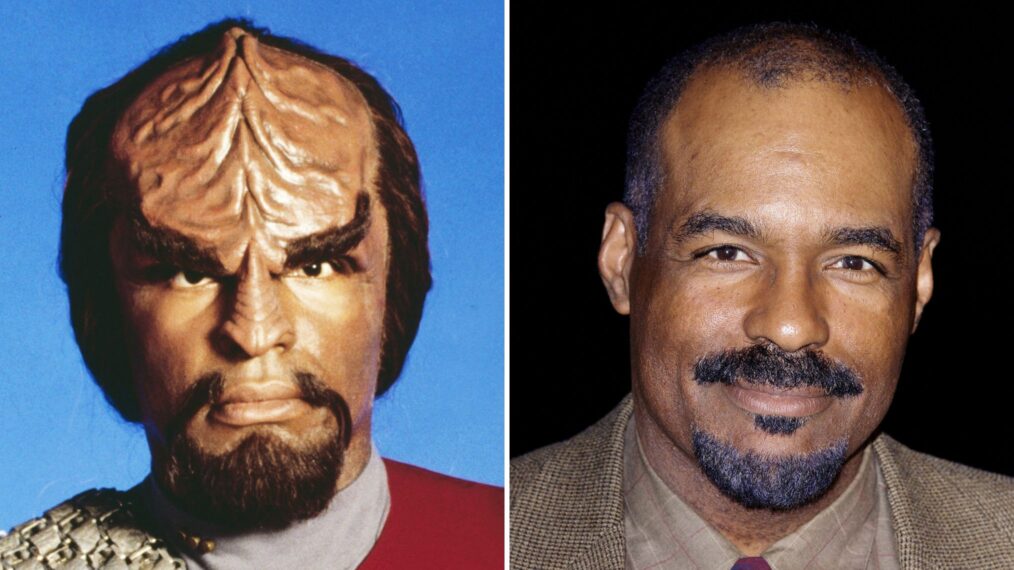
Michael Dorn as Worf
In a 2015 Reddit AMA , Dorn told fans that his Klingon officer’s look took three hours to apply each day and that he had sat in the makeup chair 1,000 times by that point. (And that was before he returned for Star Trek: Picard .) “I was the smartest person for those 11 years in Los Angeles, because while they did the makeup, I read the Los Angeles Times from cover-to-cover and did the crossword puzzle,” he quipped.
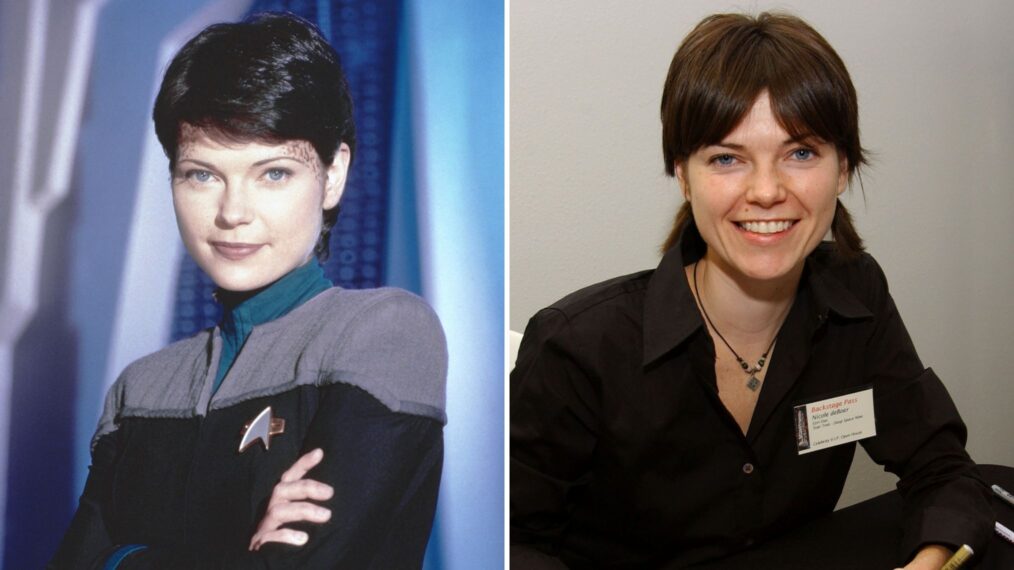
Nicole de Boer as Ezri Dax
De Boer joined DS9 as the Trill counselor Ezri Dax in Season 7… and suffered a black eye while filming the Ezri-centric episode “Afterimage.” Worse yet, that accident occurred just before the show’s publicity photographer was due to arrive on set. “It was a bit… stressful,” de Boer recalled in the 2000 book Star Trek: Deep Space Nine Companion . “Fortunately, Mary Kay Morse, amazing makeup goddess that she is, managed to cover it, and you couldn’t even tell I had a shiner.”
Armin Shimerman
Michael dorn, nana visitor, nicole de boer, rene auberjonois, terry farrell.

Benefits to Registering & Following
(It's free!)

- Movies & TV
- Featured Categories
Buy new: #buybox .a-accordion .a-accordion-active .a-price[data-a-size=l].reinventPriceAccordionT2 .a-price-whole { font-size: 28px !important; } #buybox .a-accordion .a-accordion-active .a-price[data-a-size=l].reinventPriceAccordionT2 .a-price-fraction, #buybox .a-accordion .a-accordion-active .a-price[data-a-size=l].reinventPriceAccordionT2 .a-price-symbol { top: -0.75em; font-size: 13px; } $79.99 $ 79 . 99 FREE delivery June 13 - 17 Ships from: Headen Enterprises Sold by: Headen Enterprises
Save with used - very good #buybox .a-accordion .a-accordion-active .a-price[data-a-size=l].reinventpriceaccordiont2 .a-price-whole { font-size: 28px important; } #buybox .a-accordion .a-accordion-active .a-price[data-a-size=l].reinventpriceaccordiont2 .a-price-fraction, #buybox .a-accordion .a-accordion-active .a-price[data-a-size=l].reinventpriceaccordiont2 .a-price-symbol { top: -0.75em; font-size: 13px; } $69.95 $ 69 . 95 free delivery saturday, june 15 ships from: amazon sold by: green 2 green, return this item for free.
Free returns are available for the shipping address you chose. You can return the item for any reason in new and unused condition: no shipping charges
- Go to your orders and start the return
- Select your preferred free shipping option
- Drop off and leave!
Image Unavailable

- Sorry, this item is not available in
- Image not available
- To view this video download Flash Player

Star Trek: Deep Space Nine: The Complete Series
Purchase options and add-ons, frequently bought together.

Customers who bought this item also bought

From the manufacturer

Paramount provides premium content to audiences across worldwide. We connect with billions of people. Our studios create content for all audiences, across every genre and format, while our networks and brands forge deep connections with the world’s one of the most diverse audiences. In streaming, our differentiated strategy is scaling rapidly across free, broad pay, and premium.
Paramount Pictures Corporation is an American film and television production company and the main namesake division of Paramount Global
Product Description
Product details.
- Aspect Ratio : 4:3
- Is Discontinued By Manufacturer : No
- MPAA rating : NR (Not Rated)
- Product Dimensions : 5 x 5.7 x 7.6 inches; 3.04 Pounds
- Item model number : 43449333
- Media Format : NTSC
- Run time : 133 hours and 6 minutes
- Release date : February 7, 2016
- Actors : Armin Shimerman, Siddig El Fadil, Cirroc Lofton, Colm Meaney, Avery Brooks
- Studio : Paramount Pictures Home Entertainment
- ASIN : B01N47VPJG
- Number of discs : 47
- #8,281 in DVD
Customer reviews
Customer Reviews, including Product Star Ratings help customers to learn more about the product and decide whether it is the right product for them.
To calculate the overall star rating and percentage breakdown by star, we don’t use a simple average. Instead, our system considers things like how recent a review is and if the reviewer bought the item on Amazon. It also analyzed reviews to verify trustworthiness.
Reviews with images

- Sort reviews by Top reviews Most recent Top reviews
Top reviews from the United States
There was a problem filtering reviews right now. please try again later..
Top reviews from other countries
- Amazon Newsletter
- About Amazon
- Accessibility
- Sustainability
- Press Center
- Investor Relations
- Amazon Devices
- Amazon Science
- Sell on Amazon
- Sell apps on Amazon
- Supply to Amazon
- Protect & Build Your Brand
- Become an Affiliate
- Become a Delivery Driver
- Start a Package Delivery Business
- Advertise Your Products
- Self-Publish with Us
- Become an Amazon Hub Partner
- › See More Ways to Make Money
- Amazon Visa
- Amazon Store Card
- Amazon Secured Card
- Amazon Business Card
- Shop with Points
- Credit Card Marketplace
- Reload Your Balance
- Amazon Currency Converter
- Your Account
- Your Orders
- Shipping Rates & Policies
- Amazon Prime
- Returns & Replacements
- Manage Your Content and Devices
- Recalls and Product Safety Alerts
- Conditions of Use
- Privacy Notice
- Consumer Health Data Privacy Disclosure
- Your Ads Privacy Choices
With 'Picard' Ending, It's Time for a 'Star Trek: Deep Space Nine' Sequel Series

Your changes have been saved
Email Is sent
Please verify your email address.
You’ve reached your account maximum for followed topics.
Where Have the Sith Been This Whole Time in 'The Acolyte'?
'the acolyte's most subversive move happens in the first seven minutes, where is master yoda in 'the acolyte'.
Star Trek ’s return to the beloved characters of The Next Generation is coming to a close, and with the final season of Picard airing this year, this may be the last time that the cast graces our screens in their classic roles. However, it shouldn’t mean the end of revisiting some classic Trek series. There’s always been a beloved (but severely underappreciated) Star Trek series waiting in the wings for a proper modern revival: Deep Space Nine . While it might seem a bit soon after Picard to return to another old incarnation in the series, make no mistake, Deep Space Nine is well deserved of a rewatch and a return.
RELATED: The 10 Best Episodes of 'Star Trek: Deep Space Nine'
What 'Picard' Does, 'Deep Space Nine' Did First
The Next Generation is not only arguably the most beloved series in the Star Trek franchise (bar its middling first season) but one of the most influential sci-fi shows of all time, and the show is one of the best episodic series of its era. As the franchise’s first attempt at following a cast outside the original series Enterprise crew the show had big shoes to fill — and over the course of its mind-boggling 178 episodes (a feat no other show in the franchise has matched to date), it succeeded in that goal. Jean-Luc Picard ( Patrick Stewart ) proved to be a very different but well-respected heir to the throne that James Kirk ( William Shatner ) became famous for, and the show’s inclusion of new and exciting characters such as Klingon officer Worf ( Michael Dorn ) and android officer Data ( Brent Spiner ) gave more unique outsider perspectives to the series and prompted unique philosophical questions . It truly felt like a step forward for the franchise. Klingons were no longer simple villains but a culture to be cooperated with and learned about, alien species could vary from human-like to nearly incomprehensible life forms. Almost all additions the show made to the canon have become extremely iconic, with The Borg (first introduced in the second season) quickly becoming one of the most terrifying and unique villains in science fiction history.
With all that considered, it’s no surprise that Picard was eventually made. The world of TNG was so inviting that fans had been clamoring for a proper return. However, while the series has largely been received well by critics and fans, it’s a very different final product than what TNG delivered. Picard is a far darker show than TNG was (not to say that the show was never afraid to handle dark topics ), and while TNG evoked a fairly comfortable episodic format for the majority of its run, Picard utilizes a serialized plot. The show is good, but it can sometimes feel very unlike what made the original TNG so beloved. With its darker and edgier tone, more morally complex cast, frequent political edge, and serialized format, it feels more like a spiritual successor to a completely different 90s-era Star Trek show: Deep Space Nine.
While DS9’s first two seasons seemed to mimic TNG’s more episodic philosophy, the show always had a hint of a greater plot forming in the background. Being the first Star Trek series to remain in a single location rather than a constantly moving starship, the consequences of each episode’s conflict can’t simply be left behind by moving forward to a new star system, the recovery of the nearby planet Bajor from its long-term occupation by the hostile alien race the Cardassians is a constantly evolving issue with new challenges for the cast to tackle each episode. With the introduction of The Dominion at the end of the show’s second season , Deep Space Nine begins its true plot: an expansive and all-encompassing war the likes of which Trek hadn’t seen since its brief conflict with The Borg. DS9 diverted from a series model like TNG, which allowed audiences to (with occasional exceptions) jump into the action at any time, and instead adopted a far more serialized format, a risky move in the pre-streaming era. The show rewarded patient and attentive fans with callbacks and season-long plots that grew and changed from episode to episode. Despite using the characters of TNG , Picard seemingly has a bit more in common structure-wise with DS9 than it does with the series it draws its cast and title from.
Due to being serialized, DS9 is uniquely primed for a sequel series in ways that TNG never was. It’s a show that at times feels so deeply modern in its execution that the only things that feel out of place are some outdated CGI shots and grainy camera quality. A sequel series could get as dark and political as it wanted and still be exactly in step with what makes DS9 so beloved. And speaking of politics.
'Deep Space Nine' Was Not Afraid To Get Political (And Do It Well)
In our modern media landscape, the idea of a series ‘getting political’ is a bit of a can-of-worms statement. It could mean anything from being thoughtfully handling a political issue, to clumsily inserting some ‘ripped from the headlines’ event, to simply having POC cast members. Deep Space Nine is a show that is fundamentally about politics, deftly utilizing its setting to comment on real-world issues while entertaining the audience with its grounded and well-written characters.
The series debuted with a controversial choice right off the bat with the introduction of Benjamin Sisko ( Avery Brooks ), the first Black commander (and later the first Black captain) in Trek history. Star Trek has been renowned for its progressive ideals since The Original Series premiered in 1966 with a multicultural cast and an attempt to portray a complete absence of the sort of racial prejudices that existed at the time. However, many science fiction fans remain stubbornly opposed to any attempt to continue this legacy, the idea of major Black characters even existing in science fiction remains frustratingly controversial even to this day, and Avery Brooks’ appearance was policed by producers prior to the series premiere who were concerned about him looking “too street” for the general viewing audience. However, as the show continued, it was clear that the showrunners were quite aware of how significant this casting was, not only to the Star Trek franchise but to science fiction as a whole.
Sisko, like Picard before him, is a towering presence in his series, exuding both charisma and authority throughout the show’s run. However, unlike Picard, Sisko is given more opportunities to showcase other sides of his personality beyond his role as commander (and later captain) of the titular space station. In his interactions with his son Jake ( Cirroc Loften ) we are shown a doting father that deeply cares for his son’s wellbeing, and with his love of baseball, we are further shown that the stern and serious commander has a softer side as well. He’s one of the best main characters Trek has ever produced. DS9 even later brought the topic of Black exclusion from science fiction to the forefront in one of its most acclaimed and beloved episodes , “Far Beyond The Stars,” which used the setting of a 1950s science fiction magazine to comment on the obvious racism inherent in the opposition to a Black captain in a show made forty years later.
Outside metatextual political choices, the show was deeply invested in controversial issues, especially the issue of colonization and occupation, most often brought up in relation to main cast member Major Kira ( Nana Visitor ). Through her background in the militia that helped force the Cardassians off her planet, DS9 was able to address the ethics of terrorism and guerilla warfare, the horrors of concentration camps and comfort women, and the role of religion in these conflicts – an especially notable inclusion in the otherwise largely atheistic Star Trek franchise. With occasional exceptions of elements that feel dated or unwisely handled, DS9 examines its political topics with a great deal of tact and grace, utilizing a dark tone but never feeling as if it’s going for shock value with its subject matter. Capable simultaneously of having serious episodes about genocide and chemical warfare, and having an episode where the characters just play baseball together , and it never feels jarring. It is a very mature show that respects its audience enough to not handle these topics with kid gloves, and it has aged astonishingly well in the more than twenty years since it ended.
This forward-thinking and progressive tone, paired with an unashamed interest in modern politics surrounding war and the effects of colonization, means that DS9 has debatably aged the best out of any classic Trek series. Concepts originated in early shows, such as the body-swapping gender-shifting Trill, are taken from a poorly-aged comment about how society “isn’t ready” for same-gender relationships in TNG to an impressively prescient portrayal of the experience of transitioning and the way trans people are treated in DS9. Some elements do need updates, showrunner Ira Steven Behr acknowledged in the 2018 documentary What We Left Behind that not enough of an effort was made to present queer stories in an intentional and serious way. This introspection arguably makes the prospect of a sequel series even more appealing, if the series can give the same respect and maturity to modern topics as it did to social issues in the 90s, it can reap great rewards.
There’s Already a Framework In Place For a 'DS9' Sequel Series
Not only is DS9 better suited from a strict story-to-story basis to have a sequel series like Picard , but it already has a plan in place to do so. While TNG ended with a well-received but status-quo-continuing finale, DS9 instead ended its tenure with a series of shocking galaxy-changing revelations and character changes. It’s an excellent ending to the series, but it ended on a cliffhanger regarding the fate of several of its main characters that has left fans clamoring for more for decades. While TNG left plenty of interesting plots and threads for Picard to pull on, DS9 has many actual plots and characters already primed for a revisit.
The creators have also shown a willingness and desire to finish the series with one last return, much of What We Left Behind is made up of members of the original writing team detailing a possible continuation of the show that was organically set in the same time frame after the original series ended — two years before Picard would grace our screens using the same concept. According to Ira Steven Behr, all the planning of a hypothetical Season 8 was just an "exercise," but he also admitted that the team became quite energized in pitching a new season. The original creators are still passionate about expanding this world, interested in where structures like The Dominion had changed in the time away. A sequel series would definitely be enhanced by this palpable excitement that the original team has for the property, a wealth of new storylines just waiting in the stables if a series was greenlit.
A sequel series would work in our modern context because, in its own way, DS9 already works so well in modern terms. TNG is a show that is immersed in optimism and a curious and lighthearted tone, which makes the far more serious Picard feel much more jarring as a continuation. DS9 doesn’t have this problem, it’s dark and industrial aesthetic and serious tone already feel like a perfect mesh for what Picard was aiming for. The problems that a serialized show in the 90s would face have evaporated in the face of streaming; it’s no longer a big ask for an audience to be invested across an entire season of television, it’s almost expected. DS9 was a binge-worthy series before that word was even invented, and is probably the most future-proof show that Trek has ever produced.
Despite all of these great things DS9 was routinely underappreciated on a commercial and fan level during its original launch. Compared to TNG the series was never able to amass the same level of eyes on the show as its predecessor did, partially due to an almost vitriolic opposition to how different the series was compared to other Star Trek shows and partially due to syndication making the show difficult to follow (episodes would often show at late or unexpected hours with no reruns for months at a time, making it hard for all but the most dedicated of fans to keep up with the story). The show was very well critically received, and although it’s garnered an immense cult following, it’s never received the audience that it really deserved.
There's been a recent resurgence in love and appreciation for the series (encouraged by a much-hyped Lower Decks episode ) but in the wider canon of Trek DS9 has remained quite ignored. That’s why it deserves a sequel series now, a reappraisal of the series would drive audiences to the original series and would allow them to realize the excellent quality of the show’s ahead-of-its-time writing. With the series completed and now available on streaming, there’s never been a better time to watch it. With Star Trek experiencing a modern-day revitalization thanks to successful series like Strange New Worlds and Lower Decks , it’s important to recognize exactly what we left behind with Deep Space Nine .
- TV Features
- Star Trek: Deep Space Nine (1993)

Star Trek: Deep Space Nine's "first" ended up unknowingly hindering the franchise
Star Trek: Deep Space Nine upped the ante for not only Star Trek shows but for all syndicated programming in the area. With no universally set date and time a show would air, different cities would air syndicated platforms at a variety of times, and across a variety of networks. One city could have Deep Space Nine on at 8:00 PM on a Friday, while another city could have them on an unaffiliated channel at 2:00 on a Sunday.
Due to this, most shows didn't want to do an overarching narrative across the series. It was too hard to make sure fans saw every episode, in the order they saw it. That's a big reason why series like Star Trek, Hercules, and other syndicated shows of an era didn't do too many branching storylines that took you from week to week.
You'd have your occasional two-parter but that was usually it. Yet, Deep Space Nine bucked the trend and started doing episodes that led into one another, with a plotline that wove in and out of episodes. This started really around season five in earnest, but elements of it were there far earlier. The Dominion War is often the vocal point of the conversation of Deep Space Nine's shift from episodic to serial. No longer doing self-contained episodes, but further exploring plot points over the course of multiple episodes and even seasons.
It was a new take on Star Trek, one that Enterprise would start to incorporate more of in season three. They, however, aired on a nationally recognized channel, UPN, making it easier to follow shows week in and week out, without the concern of a network moving a beloved show for a random reason. A common occurrence back then.
The move made sense, too. At the time, it was a novel idea. Most shows, from sitcoms to procedurals and everything in between, were episodic. Even as cable and satellite television became more popular, it would be rare to see episodes of popular series truly divulge into serial broadcasts. With most shows opting to instead wrap up the plotline by the credits of that week's given episode.
Thus making Deep Space Nine and to a lesser degree Enterprise, icons to a degree for bucking the trend. Yet, as we've fully saturated ourselves in the Streaming Wars, shows like them are no longer the exception. They are now the rule. Just about every show, save for some major hits like the kid's show Bluey, has long, drawn-out narratives, that branch not just into episodes, but into the entire series.
The idea is to make how into a multi-part movie. With each part leading into another. It's become so common that people are now turning away from such programs. With so much content to watch, from YouTube to Netflix, to cable and sports, not to mention music and podcasts and lord knows what else, we just don't have the same time anymore to invest in one show putting out a 20-part movie.
The Arrowverse on the CW was the group that made this abundantly clear. They had numerous shows, with each episode running into another. Often crossing over with one another, forcing you to watch shows you had no interest in just to better understand the plot line. It worked for a time until it didn't.
That may have been the beginning of the end for people wanting for long-form, serialized content. Long, branching narratives are no longer something people want to consume. They need to be able to dip in and out as they see fit, without having to watch every episode.
It's why so many fans want and need Star Trek to stop serializing their shows. Just looking at Discovery, it's not going to be a show where you can go back and watch just one episode. It's so interconnected that if you're new to the franchise, you're going to need to watch every episode up until a certain point, just to know what's going on.
That's not an issue with The Next Generation or Voyager. They keep their shows tight to 42 minutes, show you everything you need to know before the opening credits, and have you feeling fulfilled by the start of the credits. You don't need to watch every episode of The Next Generation just to know what's going on in The Best of Both Worlds Part 1. Nor do you need to understand the first four seasons before getting to Voyager's Timeless episode.
That's not the case in Discovery. It's why so many of us are so into Strange New Worlds. They keep their episodes nice and tight to 42 minutes, with a better-than-average ability to jump into an episode blind and be able to understand what's going on.
That's why Star Trek needs to revert all of its shows to episodic going forward. We no longer have the time or desire to sit through boring episode after boring episode just to see what the hype is about. Deep Space Nine did a bold new thing, but continuing its trend isn't going to help the franchise. It's going to hinder it. As we have less and less free time, we don't need to be investing it into every episode of a franchise that rarely ever hits the mark.
This article was originally published on redshirtsalwaysdie.com as Star Trek: Deep Space Nine's "first" ended up unknowingly hindering the franchise .

5 Best Horror Episodes Of Star Trek, Ranked

"Star Trek" and "scary" aren't words that are often associated with each other. After all, it's a sci-fi franchise that's more about philosophy than action . "Trek" focuses on optimism and exploration, in a world where humanity has finally put internecine conflicts aside because we realized we are only one speck of a larger universe.
On the edge of the final frontier, though, all types of stories are possible ( even musicals, as "Subspace Rhapsody" proved last year) . "Star Trek: The Original Series" began with "The Man Trap," essentially a monster B-movie in space about a salt-vampire with the mouth of a lamprey. In season 2, the series concocted a whole Halloween special with "Catspaw," about two psychic aliens who have constructed a Gothic castle as a trap for the Enterprise crew.
In the 60-ish years "Star Trek" has existed, it has returned to horror regularly enough to call this a trend. As the omnipotent trickster Q (John de Lancie) warned Captain Jean-Luc Picard (Patrick Stewart), the galaxy is "not for the timid." Which of the scariest "Star Trek" episodes are the most memorable?
5. Empok Nor (Star Trek: Deep Space Nine)
"Star Trek: Deep Space Nine" took place on a space station , not a starship. The eponymous station orbited the frontier world of Bajor, recently freed from occupation by the tyrannical Cardassians. In fact, Deep Space Nine itself was not native Starfleet hardware, but a repurposed Cardassian outpost once called Terok Nor.
That causes problems in season 5 episode "Empok Nor," when DS9 needs repairs with parts Starfleet doesn't have. Chief Miles O'Brien (Colm Meaney) leads a salvage team to the abandoned Cardassian station Empok Nor, bringing along the semi-friendly Cardassian Garak (Andrew Robinson) to help disarm booby traps. Among said traps are some Cardassian sleeper agents.
"Empok Nor" unfolds like a slasher movie in space, taking place in tight corridors and dark lighting (diegetically because the station is unpowered) as characters are picked off one-by-one. Redshirts (disposable Starfleet crew members) are a common feature of "Star Trek," but the four in this episode feel as much like teenagers targeted by Michael Myers or Jason Voorhees.
If there's a weak link to the episode, it's (I can't believe I'm saying this) Garak. The episode turns him into a villain, justifying it with the Cardassians on Empok Nor having experimented with a drug to amp up xenophobia — yes, a racism drug. The episode ties it together with Garak egging O'Brien about his service in the Federation-Cardassian War (as revealed in the first Cardassian episode, "The Wounded" from "The Next Generation"), so against Garak, O'Brien must again fight a Cardassian foe and become a soldier to do so. In the end, though, it's just not the best use of Garak, the fey, silver-tongued rogue we know and love.
4. The Devil in the Dark (Star Trek: The Original Series)
"The Devil in the Dark" features the Enterprise crew summoned to a mining colony, where an unseen creature has been killing workers and leaving only charred corpses behind. They discover the creature, the Horta, is a silicon-based lifeform that more or less looks like a moving pile of molten lava ('60s TV special effects, y'all). Like the lesson Steven Spielberg later took to heart on "Jaws," "The Devil in the Dark" wisely keeps the Horta unseen during earlier parts of the episode — both building up the mystery and compensating for the show's limits in realizing the threat. The episode's opening scene, where a miner is killed by the Horta, shows neither the creature nor his burnt corpse and is all the scarier for it.
I previously mentioned the series premiere "The Man Trap," which had a similar premise of the Enterprise crew hunting/being hunted by an alien monster. That episode was unpopular among cast and crew (William Shatner called it one of the show's worst episodes in his memoir "Star Trek Memories"), but NBC chose it to debut "Star Trek" because it was simple. "The Devil in the Dark" feels like a second go and is a more successful one. It's more atmospheric and ultimately more complex.
"The Man Trap" tries to add nuance by making the Salt Vampire an endangered species that preys on humans because its native environment (and food) has been wiped out. In the end, though, it's a monster that must be killed. In "The Devil in the Dark," Spock (Leonard Nimoy) mind melds with the Horta and discovers it was only attacking because the miners were unknowingly destroying its eggs. Communication with those who are different wins the day, which is a more fitting "Star Trek" ending.
3. All Those Who Wander (Star Trek: Strange New Worlds)
"Star Trek: Strange New Worlds" has reintroduced the Gorn as its recurring "villain species." (This is the species of the alien lizard that Captain Kirk fought in classic episode "Arena.") What the Klingons were in "The Original Series," the Gorn are in "Strange New Worlds." The cliffhanger ending of season 2 even has the Enterprise locked in combat with the Gorn, the aliens having stolen several of their crew and Captain Pike (Anson Mount) unsure of what to do.
The first Gorn episode of "Strange New Worlds" — "Memento Mori" — showed only their ships. In "All Those Who Wander," penultimate episode of season 1, the Enterprise gets up close and personal with Gorn youths in an "Alien" homage. While investigating a crashed ship that suffered a run-in with the Gorn, the Enterprise crew has to avoid meeting their fate. Like in "Empok Nor," the setting is used to justify darker, more horror-ish lighting than usual on "Star Trek."
Episode writer Dave Perez and director Christopher J. Byrne let their "Alien" fandom show in the construction of "All Those Who Wander." Gorn are revealed to reproduce like Xenomorphs (using living beings as egg incubators), and an unfortunate alien has several Gorn hatchlings burst out of his back, a la the Neomorphs in "Alien: Covenant." The episode even has its own Newt in Oriana (Emma Ho), a feral child who barely survived Gorn captivity.
The futures "Star Trek" and "Alien" promise mankind couldn't be more different, but "All Those Who Wander" shows the former can do an effective cover of the latter.
2. Dead Stop (Star Trek: Enterprise)
"Star Trek: Enterprise" was a prequel, following the adventures of the first Starfleet ship to bear the name "Enterprise" in the 22nd century. This should have meant supplies and repairs would be a recurring issue (no Starbases yet), but they rarely were. "Rarely" doesn't mean "never."
In the "Enterprise" season 2 episode "Minefield," the NX-01 gets a chunk of its hull blown up by a cloaked Romulan mine. In the following episode, "Dead Stop," they're still dealing with the damage. Consequences carrying over from one episode to the next? What is this, "Battlestar Galactica"?
A distress signal leads the Enterprise to an automated repair station (voiced by episode director and B'Elanna Torres herself, Roxann Dawson), which repairs the ship for suspiciously low pay. Then Ensign Travis Mayweather (Anthony Montgomery) is found dead, and foul play is in turn discovered. This culminates in the supremely creepy reveal about the station's AI: living beings (abducted from the crews of visited ships) have their brains hooked into the station's core to increase its processing output. Travis is the AI's latest acquisition (his apparently dead body was actually a fake), but fortunately his crewmates are able to rescue him.
The episode wisely teases the origins of the station by having the characters themselves ponder it, but just as smartly holds back on any revelations. The mystery of the station stands by the episode's end, which makes it all the more memorable because you're still asking questions when the credits roll.
The machines-using-people-as-batteries twist of "Dead Stop," aired in 2002, can't help but call to mind "The Matrix." Perhaps that's why the more speculative "Star Trek" fans love to postulate the station's hive mind computer is somehow connected to the Borg.
Speaking of...
1. Q Who (Star Trek: The Next Generation)
For "The Next Generation," the choice of scariest episode was a toss-up between "Q Who" and "Schisms." The latter is a season six episode where members of the Enterprise crew report trouble sleeping, and discover that at night they're being abducted and returned by interdimensional aliens. (You'd be forgiven for thinking "TNG" was trying to capture some "X-Files" magic , but "Schisms" actually aired in 1992, a year before that show's debut.)
But it had to come down to this: season 2's "Q Who," the first Borg episode in "Star Trek" and the most personally unsettling "Next Generation" episode. At the end of the first act, Q whisks the Enterprise-D away to a remote sector of space as part of another trial over how "evolved" humanity is.
In that region, Picard and co. meet the Borg. The build-up to the Borg is exquisite; as the Enterprise scans local planets, they're all barren, signaling that our heroes are about to meet a powerful and ravenous foe. The first sight of the Borg cube is accompanied by an ominous theme; composer Ron Jones whipped up something out of "A Nightmare on Elm Street."
"The Best of Both Worlds" is the definitive "Star Trek" Borg episode, but even that one can't compete with how unknowable, unbeatable, and downright terrifying they are in "Q Who."
Screen Rant
Sisko’s defiant had a revolutionary feature star trek: ds9 only used once.

Your changes have been saved
Email Is sent
Please verify your email address.
You’ve reached your account maximum for followed topics.
Voyager Is Why Star Trek: DS9's Starship Is Called Defiant
I’m glad star trek: ds9 abandoned the original controversial plan for chief o’brien, star trek: ds9's dax actress calls out sexism in major kira's friendship.
- The USS Defiant had a forgotten holo-filter, used once to deceive Cardassians with a distant disguise.
- Star Trek's Gene Roddenberry initially disapproved of such covert technology on Starfleet ships.
- The Defiant's holo-filter was limited and not very convincing, leading to its one-time use and eventual abandonment.
The USS Defiant, commanded by Captain Benjamin Sisko in Star Trek: Deep Space Nine had a revolutionary new starship feature that the show swiftly forgot about. Introduced in DS9 season 3, the USS Defiant was a starship of many firsts. It was Starfleet's first warship in decades, initially built to battle the Borg threat but deployed to tackle the Dominion . The USS Defiant also had a cloaking device fitted, which was authorized by the Romulan Star Empire for use in the Gamma Quadrant. The Defiant's cloaking device broke Star Trek rules , but it was necessary to tackle the threat posed by the Dominion.
The USS Defiant's cloaking device wasn't the only covert feature that the starship had in its arsenal, however. In Star Trek: Deep Space Nine season 3, episode 5, "Second Skin", Major Kira Nerys (Nana Visitor) is kidnapped by the Obsidian Order, forcing Commander Sisko to take the Defiant into Cardassian space. With the use of the cloaking device banned outside the Gamma Quadrant, Sisko had to come up with another way to try and fly the Defiant past Cardassian defenses. So, for the first and only time, the Deep Space Nine crew used the Defiant's holo-filter.
One of Ronald D. Moore's first jobs on Star Trek: DS9 was to name the starship that would become the Defiant, and Voyager vetoed his first choice.
Sisko’s Defiant Had A Holofilter That Star Trek Forgot About
The Defiant's holo-filter could change the appearance of someone during visual communications with other ships . In Star Trek: Deep Space Nine season 3, episode 4, "Second Skin", Sisko used this feature to disguise himself as a Kobheerian freighter captain. As impressive as the technology was, the Defiant's holo-filter was only functional from a distance. Lt. Jadzia Dax (Terry Farrell) tells Sisko that if the Cardassian patrol got closer, it would identify the Defiant as a Starfleet warship and not a humble Kobheerian freighter.
The footage of the Kobheerian captain was from the DS9 season 1 episode "Duet", but actor Norman Large was not credited for his appearance.
This is the only time that the USS Defiant uses a holo-filter in Star Trek: Deep Space Nine , but it wasn't the last time that the technology was deployed. In Star Trek: Deep Space Nine season 5, episode 1, "Apocalypse Rising", Gul Dukat (Marc Alaimo) uses a holo-filter to pretend to be a Klingon Warrior while smuggling Sisko and his team into enemy territory. After this point, however, the holo-filter was never used again.
What Happened To The USS Defiant’s Holofilter In Star Trek?
Although a neat feature that would have helped the USS Defiant infiltrate the Gamma Quadrant in the years leading up to Star Trek 's Dominion War , the holo-filter was potentially just as controversial as a cloaking device. Gene Roddenberry famously objected to Starfleet ships having cloaking devices because " our guys don't sneak around ". It's possible that Rick Berman, the custodian of the Star Trek legacy after Roddenberry's death in 1991, decided that a holo-filter was similarly underhanded.
A one-off use of the holo-filter was probably signed off by Berman because, ultimately, Elim Garak (Andrew Robinson) convinced Sisko to turn it off and confront the Cardassians directly. It was also very limited, only useful from a specific distance. The most likely reason that the USS Defiant never used the holo-filter is the fact that it wasn't all that useful in convincing a Cardassian patrol that Sisko was a humble freighter captain. Which is why "Second Skin" was the one-and-only appearance of the Defiant's holo-filter in Star Trek: Deep Space Nine .
All episodes of Star Trek: Deep Space Nine are available to stream on Paramount+.
Star Trek: Deep Space Nine
*Availability in US
Not available
Star Trek: Deep Space Nine, also known as DS9, is the fourth series in the long-running Sci-Fi franchise, Star Trek. DS9 was created by Rick Berman and Michael Piller, and stars Avery Brooks, René Auberjonois, Terry Farrell, and Cirroc Lofton. This particular series follows a group of individuals in a space station near a planet called Bajor.
Inside the ‘Star Trek: Discovery’ Series Finale: The Last-Minute Coda, the Surprise Easter Eggs, and What Season 6 Would Have Been About (EXCLUSIVE)

SPOILER WARNING: This story includes descriptions of major plot developments on the series finale of “ Star Trek : Discovery,” currently streaming on Paramount+ .
Watching the fifth and final season of “ Star Trek: Discovery ” has been an exercise in the uncanny. Paramount+ didn’t announce that the show was ending until after the Season 5 finale had wrapped filming — no one involved with the show knew it would be its concluding voyage when they were making it. And yet, the season has unfolded with a pervasive feeling of culmination.
Related Stories
Pixar key to hdr cinema expansion, narendra modi proclaims victory in india's general election as opposition alliance makes massive gains, popular on variety.
“I think there’s more to it than just, ‘Oh, it was a coinkydink!’” the actor says with a laugh, before explaining that she’s thinking more about subtext than direct intent. “I’ve gotta give Michelle her flowers. She has always asked the deeper questions of this story and these characters. Those questions of meaning and purpose led to questions of origin and legacy, and, yes, that is quite culminating.”
Martin-Green and Paradise spoke exclusively with Variety about filming the finale and the coda, including the surprising revelation about the origins of one of “Discovery’s” most memorable characters and what Paradise’s plans for Season 6 would have been.
“It’s the Most Complicated Thing I’ve Ever Seen”
Once the “Discovery” writers’ room decided the season would be organized around a search for the Progenitor’s technology, they also knew that, eventually, Burnham would find it. So then they had to figure out what it would be.
“That was a discussion that evolved over the course of weeks and months,” Paradise says. Rather than focus on communicating the intricate details of how the technology works, they turned their attention to delivering a visual experience commensurate with the enormity and complexity of something that could seed life across the entire galaxy.
“We wanted a sense of a smaller exterior and an infinite interior to help with that sense of power greater than us,” Paradise says. Inspired in part by a drawing by MC Escher, the production created an environment surrounded by towering windows into a seemingly endless procession of alien planets, in which it’s just as easy to walk on the walls as on the floor. That made for a daunting challenge for the show’s producing director, Olatunde “Tunde” Osunsanmi: As Burnham battles with the season’s main antagonist, Mol (Eve Harlow), inside this volume, they fall through different windows into another world, and the laws of gravity keep shifting between their feet.
“It’s the most complicated thing I’ve ever seen, directorially,” Paradise says. “Tunde had a map, in terms of: What did the background look like? And when the cameras this way, what’s over there? It was it was incredibly complex to design and shoot.”
Two of those planets — one in perpetual darkness and rainstorms, another consumed by constant fire — were shot on different parking areas on the Pinewood Toronto studio lot.
“The fire planet was so bright that the fire department got called from someone who had seen the fire,” Paradise says. “It should not be possible to pull those kinds of things off in a television show, even on a bigger budget show, with the time limitations that you have. And yet, every episode of every season, we’re still coming in on time and on budget. The rain planet and the fire planet we shot, I believe, one day after the other.”
Martin-Green jumps in: “Michelle, I think that was actually the same day!”
“It Felt Lifted”
The last time a “Star Trek” captain talked to a being that could be (erroneously) considered God, it was William Shatner’s James T. Kirk in 1989’s “Star Trek: The Final Frontier.” The encounter did not go well.
“I had my own journey with the central storyline of Season 5, just as a believer,” Martin-Green says. “I felt a similar way that Burnham did. They’re in this sort of liminal mind space, and it almost felt that way to me. It felt lifted. It really did feel like she and I were the only two people in this moment.”
It’s in this conversation that Burnham learns that while the Progenitors did create all “humanoid” alien species in the galaxy in their image, they did not create the technology that allowed them to do so. They found it, fully formed, created by beings utterly unknown to them. The revelation was something that Martin-Green discussed with Paradise early on in the planning of Season 5, allowing “Discovery” to leave perhaps the most profound question one could ask — what, or who, came first in the cosmos? — unanswered.
“The progenitor is not be the be all end all of it,” Paradise says. “We’re not saying this is God with a capital ‘G.’”
“There’s Just This Air of Mystery About Him”
Starting on Season 3 of “Discovery,” renowned filmmaker David Cronenberg began moonlighting in a recurring role as Dr. Kovich, a shadowy Federation operative whose backstory has been heretofore undisclosed on the show.
“I love the way he plays Kovich,” Paradise says of Cronenberg. “There’s just this air of mystery about him. We’ve always wanted to know more.” When planning Season 5, one of the writers pitched revealing Kovich’s true identity in the (then-season) finale by harkening back to the “Star Trek” show that preceded “Discovery”: “Enterprise,” which ran on UPN from 2001 to 2005.
In the final episode, when Burnham debriefs her experiences with Kovich, she presses him to tell her who he really is. He reintroduces himself as Agent Daniels, a character first introduced on “Enterprise” as a young man (played by Matt Winston) and a Federation operative in the temporal cold war.
This is, to be sure, a deep cut even for “Star Trek” fans. (Neither Cronenberg nor Martin-Green, for example, understood the reference.) But Paradise says they were laying the groundwork for the reveal from the beginning of the season. “If you watch Season 5 with that in mind, you can see the a little things that we’ve played with along the way,” she says, including Kovich/Daniels’ penchant for anachonistic throwbacks like real paper and neckties.
“I didn’t know that that was going be there,” Martin-Green says. “My whole childhood came back to me.”
“We Always Knew That We Wanted to Somehow Tie That Back Up”
Originally, Season 5 of “Discovery” ends with Burnham and Book talking on the beach outside the wedding of Saru (Doug Jones) and T’Rina (Tara Rosling) before transporting away to their next adventure. But Paradise understood that the episode needed something more conclusive once it became the series finale. The question was what.
There were some significant guardrails around what they could accomplish. The production team had only eight weeks from when Paramout+ and CBS Studios signed off on the epilogue to when they had to shoot it. Fortunately, the bridge set hadn’t been struck yet (though several standing sets already had been). And the budget allowed only for three days of production.
Then there was “Calypso.”
To fill up the long stretches between the first three seasons of “Discovery,” CBS Studios and Paramount+ greenlit a series of 10 stand-alone episodes, dubbed “Short Treks,” that covered a wide variety of storylines and topics. The second “Short Trek” — titled “Calypso” and co-written by novelist Michael Chabon — first streamed between Season 1 and 2 in November 2018. It focuses on a single character named Craft (Aldis Hodge), who is rescued by the USS Discovery after the starship — and its now-sentient computer system, Zora (Annabelle Wallis) — has sat totally vacant for 1,000 years in the same fixed point in space. How the Discovery got there, and why it was empty for so long, were left to the viewer’s imagination.
Still, for a show that had only just started its run, “Calypso” had already made a bold promise for “Discovery’s” endgame — one the producers had every intention of keeping.
“We always knew that we wanted to somehow tie that back up,” says Paradise, who joined the writers’ room in Season 2, and became showrunner starting with Season 3. “We never wanted ‘Calypso’ to be the dangling Chad.”
So much so, in fact, that, as the show began winding down production on Season 5, Paradise had started planning to make “Calypso” the central narrative engine for Season 6.
“The story, nascent as it was, was eventually going to be tying that thread up and connecting ‘Discovery’ back with ‘Calypso,’” she says.
Once having a sixth season was no longer an option, Paradise knew that resolving the “Calypso” question was non-negotiable. “OK, well, we’re not going to have a season to do that,” she says. “So how do we do that elegantly in this very short period of time?”
“I Feel Like It Ends the Way It Needed to End”
Resolving “Calypso” provided the storytelling foundation for the epilogue, but everything else was about giving its characters one final goodbye.
“We want to know what’s happening to Burnham, first and foremost,” Paradise says. “And we knew we wanted to see the cast again.”
For the latter, Paradise and Jarrow devised a conceit that an older Burnham, seated in the captain’s chair on Discovery, imagines herself surrounded by her crew 30 years prior, so she (and the audience) could connect with them one final time. For the former, the makeup team designed prosthetics to age up Martin-Green and Ajala by 30 years — “I think they were tested as they were running on to the set,” Paradise says with a laugh — to illustrate Burnham and Book’s long and happy marriage together.
Most crucially, Paradise cut a few lines of Burnham’s dialogue with Book from the original Season 5 finale and moved it to a conversation she has with her son in the coda. The scene — which evokes the episode’s title, “Life Itself” — serves as both a culminating statement of purpose for “Discovery” and the overarching compassion and humanity of “Star Trek” as a whole.
To reassure her son about his first command of a starship, Burnham recalls when the ancient Progenitor asked what was most meaningful to her. “Do you know how you would answer that question now?” he asks.
“Yeah, just being here,” Burnham replies. “You know, sometimes life itself is meaning enough, how we choose to spend the time that we have, who we spend it with: You, Book, and the family I found in Starfleet, on Discovery.”
Martin-Green relished the opportunity to revisit the character she’s played for seven years when she’s reached the pinnacle of her life and career. “You just get to see this manifestation of legacy in this beautiful way,” she says. “I will also say that I look a lot like my mom, and that was that was also a gift, to be able to see her.”
Shooting the goodbye with the rest of her cast was emotional, unsurprisingly, but it led Martin-Green to an unexpected understanding. “It actually was so charged that it was probably easier that it was only those three days that we knew it was the end, and not the entirety of season,” she says.
Similarly, Paradise says she’s “not sure” what more she would’ve done had there been more time to shoot the coda. “I truly don’t feel like we missed out on something by not having one more day,” she says. “I feel like it ends the way it needed to end.”
Still, getting everything done in just three days was no small feat, either. “I mean, we worked ’round the clock,” Martin-Green says with a deep laugh. “We were delirious by the end — but man, what a way to end it.”
More from Variety
Gullane, producer of netflix series ‘senna,’ to make ayrton senna-related doc and animation, plus new features and series (exclusive), with queen catalog deal, sony would rule cooled music publishing market, viz media adds one-shots, bite-sized manga and creator training program (exclusive), stan garner, movie train consultant and actor, dies at 83, what media & entertainment execs are saying about using gen ai: the vip+/harrisx spring 2024 survey, variety tv fyc fest recap: virtual reality dramas, a ‘frasier’ reunion, tv icons and creators talk the future of television, more from our brands, israel defense forces spokesman grilled on palestinian civilian deaths during hostage rescue, how to collect vintage watches: 5 expert tips from dealer alan bedwell, with ohtani and world cup cricket, new york has asia’s attention, the best loofahs and body scrubbers, according to dermatologists, michael mosley, british tv presenter, dead at 67 — had been missing for days, verify it's you, please log in.

IMAGES
VIDEO
COMMENTS
Star Trek: Deep Space Nine: Created by Rick Berman, Michael Piller. With Avery Brooks, Rene Auberjonois, Cirroc Lofton, Alexander Siddig. In the vicinity of the liberated planet of Bajor, the Federation space station Deep Space Nine guards the opening of a stable wormhole to the far side of the galaxy.
Star Trek: Deep Space Nine (DS9) is an American science fiction television series created by Rick Berman and Michael Piller.The fourth series in the Star Trek media franchise, it originally aired in syndication from January 3, 1993, to June 2, 1999, spanning 176 episodes over seven seasons. Set in the 24th century, when Earth is part of a United Federation of Planets, its narrative is centered ...
Star Trek: Deep Space Nine chronicles the adventures of Captain Benjamin Sisko and a team of Starfleet officers who take command of a remote space station on the edge of a frontier and a critical crossroads of galactic events. 7 seasons • 176 episodes • 1993-1999.
Star Trek: Deep Space Nine is the third live-action television series in the Star Trek franchise and aired in syndication from January 1993 through June 1999. There were a total of 173 (original broadcast & DVD) or 176 (syndicated) episodes over the show's seven seasons, which are listed here in chronological order by original airdate, which match the episode order in each season's DVD set.
S5.E22 ∙ Children of Time. Mon, May 5, 1997. The DS9 crew discovers a small colony on a remote world that was originally populated by them 200 years earlier due to a time-travel accident with the Defiant. The current colonists lives depend on making sure that accident happens again, even though they've now forwarned the crew that it will happen.
A spinoff of "Star Trek: The Next Generation," "Deep Space Nine" is set on a space station near the planet Bajor. This time, Commander Benjamin Sisko is in charge of a diverse crew. But unlike other "Star Trek" series, there's no USS Enterprise to help them. Sisko and the crew must fight off rival alien species who want control of Deep Space ...
Star Trek: Deep Space Nine was the fourth Star Trek series and entered production in 1992. It was broadcast in first-run syndication from January 1993 until June 1999. It was the first Star Trek series created by Rick Berman and Michael Piller rather than by Gene Roddenberry. It was also the only series to air alongside another Star Trek production throughout its entire run, airing alongside ...
S1.E4 ∙ A Man Alone. Sun, Jan 17, 1993. Ibudan, a criminal Odo has dealt with before, returns to DS9 only to be murdered shortly after - leaving Odo to be the prime suspect. Jake and Nog's trouble-making prompt Keiko to do something helpful for the station's children. 6.8/10 (2.6K)
A spinoff of "Star Trek: The Next Generation," "Deep Space Nine" is set on a space station near the planet Bajor. This time, Commander Benjamin Sisko is in charge of a diverse crew. But unlike ...
STAR TREK: DEEP SPACE NINE takes place in the mid 24th century and chronicles the adventures of a team of Starfleet officers who take command of a remote alien space station on the edge of a new frontier. Buy Star Trek: Deep Space Nine: The Complete Series on Google Play, then watch on your PC, Android, or iOS devices.
The result of Berman and Piller's efforts was "Star Trek: Deep Space Nine," a seminal work of 20th century sci-fi television. In terms of tone, premise, characterization, themes, and execution ...
Star Trek: Deep Space Nine's cast in season five, after Michael Dorn (Worf) had joined in season four and before Terry Farrell (Jadzia Dax) left at the end of season six. Star Trek: Deep Space Nine is an American science fiction television series that debuted in broadcast syndication on January 3, 1993. The series ran for seven seasons until 1999. The show was spun off from Star Trek: The Next ...
A spinoff of "Star Trek: The Next Generation," "Deep Space Nine" is set on a space station near the planet Bajor. This time, Commander Benjamin Sisko is in charge of a diverse crew. But unlike ...
From its earliest concepts, Star Trek: Deep Space Nine was intended to defy the conventions and expectations set by earlier Star Trek shows, and the finale, "What You Leave Behind" brings those efforts to a conclusion that is, expectedly, not what was expected. "What You Leave Behind" at first seems out-of-place compared to the conclusions of the previous series.
Star Trek: Deep Space Nine. STAR TREK: DEEP SPACE NINE takes place in the mid-24th century and chronicles the adventures of a team of Starfleet officers who take command of a remote alien space station on the edge of a new frontier. Stream Star Trek: Deep Space Nine free and on-demand with Pluto TV. Free Movies & TV Shows.
Premiering in 1993 and ending in 1999, Deep Space Nine (DS9) warped into new territory for Trek. Set mostly on a space station rather than a starship, DS9 was grittier than The Next Generation ...
A Quarter-Century Later, Deep Space Nine's Finale is a Bridge Between Old and New Star Trek. ... The result was a series that moved Star Trek towards nuanced serialized storytelling, ...
Synopsis: DEEP SPACE. ENDLESS ADVENTURE. Relive all seven seasons of the series that took the Star Trek franchise into uncharted territory. Commander Benjamin Sisko is in charge of a diverse crew aboard the Deep Space 9, a space station in a constant power struggle with rival species due to its strategic position close to a nearby wormhole, which allows speedy travel to the far reaches of space.
S4.E13 ∙ Return to Grace. Mon, Feb 5, 1996. Dukat returns, stripped of his prestige, to escort Kira to a Cardassian conference about the Dominion. But an attack by a Klingon raider may give Dukat a chance to redeem himself in the eyes of his government. 7.7/10 (2.1K)
In this "Star Trek" spin-off, Commander Sisko leads the multi-species crew of Deep Space Nine, a Federation space station with a complex mission. Watch trailers & learn more.
June 19, 1993. 46min. 13+. When a Bajoran spiritual leader objects to Keiko's secular teachings, she threatens to destroy the alliance between Bajor and the Federation. Free trial of Paramount+ or buy. At Deep Space Nine, a space station located next to a wormhole, Cmdr. Sisko (Avery Brooks) and crew members Odo (Rene Auberjonois), O'Brien ...
"It was a bit… stressful," de Boer recalled in the 2000 book Star Trek: Deep Space Nine Companion. "Fortunately, Mary Kay Morse, amazing makeup goddess that she is, managed to cover it ...
In essence, Deep Space Nine becomes home, and the casts are our neighbors and friends who we care about. This series is not a video game designed around the special effects. Although there will be some good action and adventure, it is not the constant action adventure of the other Star Trek series.
With 'Picard' Ending, It's Time for a 'Star Trek: Deep Space Nine' Sequel Series. By Jack Coleman. Published Feb 23, 2023. Link copied to clipboard. Star Trek 's return to the beloved characters ...
Star Trek: Deep Space Nine upped the ante for not only Star Trek shows but for all syndicated programming in the area.With no universally set date and time a show would air, different cities would ...
"Star Trek: Deep Space Nine" took place on a space station, not a starship.The eponymous station orbited the frontier world of Bajor, recently freed from occupation by the tyrannical Cardassians.
Star Trek: Deep Space Nine, also known as DS9, is the fourth series in the long-running Sci-Fi franchise, Star Trek. DS9 was created by Rick Berman and Michael Piller, and stars Avery Brooks, René Auberjonois, Terry Farrell, and Cirroc Lofton. This particular series follows a group of individuals in a space station near a planet called Bajor.
Kovich's office is littered with relics from "Star Trek" history, like a bottle of Chateau Picard, the baseball from the desk of Capt. Benjamin Sisko of "Deep Space Nine," and one item ...